Difference between revisions of "CartridgeCulture"
From Sega Retro
m (userpage) |
m |
||
| (405 intermediate revisions by 2 users not shown) | |||
| Line 1: | Line 1: | ||
| − | '''{{PAGENAME}}''' is | + | '''{{PAGENAME}}''' is an American [https://segaretro.org Sega Retro] editor. |
| − | == | + | ==Notable contributions== |
| − | + | {| class="prettytable sortable" | |
| − | + | |- | |
| − | + | |[[Game Factory]] | |
| − | + | |A rewritable [[Sega Mega Drive]] cartridge service run by [[Blockbuster]] around late 1994, developed through a collaboration between [[Sega of America]] and [[NewLeaf Entertainment]].{{magref|egm2|1|28}}{{magref|sv|20|8}} A novel idea in the world of home rentals, the service was highly ambitious and critically well-received, but suffered from a number of problems and had its subsequent nationwide rollout eventually cancelled.{{ref|1=https://ghostarchive.org/varchive/nrUWIHasHPQ|2=https://www.youtube.com/watch?v=nrUWIHasHPQ}} | |
| + | |[[File:GameFactory MD cart alt.png|link=Game Factory]] | ||
| + | |- | ||
| + | |[[HeartBeat Catalyst]] | ||
| + | |A third-party [[Sega Mega Drive]] exercise peripheral with included body-mounted [[wikipedia:Activity tracker|fitness sensors]] which reads heart rate, motion, and skin salinity levels for in-game feedback.{{magref|sv|15|108}} Developed by American video game hardware developer [[HeartBeat Corporation]] and primarily sold alongside the [[Personal Trainer]], it was released exclusively in the United States in November 1993.{{ref|https://web.archive.org/web/20210414054316/http://videogamekraken.com/heartbeat-personal-trainer-catalyst}} Notable for having a production run of only 1,000 units, and sold with the exclusive pack-in game ''[[Outback Joey]]'', both are considered some of the rarest pieces of Mega Drive history in existence.{{ref|https://web.archive.org/web/20131011185723/https://www.sega-16.com/2004/08/genesis-accessory-peripheral-guide/}} | ||
| + | |[[File:HeartBeatCatalyst boxdetail.png|link=HeartBeat Catalyst]] | ||
| + | |- | ||
| + | |[[LaserActive]] | ||
| + | |A video game-compatible [[wikipedia:LaserDisc|LaserDisc]] player designed and manufactured by [[Pioneer]].{{ref|https://web.archive.org/web/20201111214049/https://laseractive.wordpress.com/interviews/}} Released in Japan and North America in late 1993, the system features interchangeable hardware expansions known as PACs, which enable compatibility with [[Mega Drive]] and [[Mega-CD]] games, [[nec:PC Engine|PC Engine]] and [[nec:PC Engine CD-ROM²|PC Engine CD-ROM²]] games, and a new type of LaserDisc-based format: Sega Mega LD and NEC LD-ROM².{{ref|https://web.archive.org/web/20240814173342/https://laseractive.wordpress.com/about-the-laseractive/}} | ||
| + | |[[File:LaserActive announcementpromo.png|link=LaserActive]] | ||
| + | |- | ||
| + | |[[Sega VR]] | ||
| + | |An unreleased [[virtual reality]] peripheral developed by [[Sega of America]] and [[Ono-Sendai]] for the [[Sega Genesis]].{{ref|https://web.archive.org/web/20240418181046/https://medium.com/ghvr/tc-shanghai-2016-8ad6c097262d}} Announced in 1991, the [[wikipedia:head-mounted display|head-mounted display]] languished in development for a number of years, and was quietly cancelled around late 1994.{{ref|1=https://web.archive.org/web/20100114191355/http://sega-16.com/feature_page.php?id=5&title=Sega%20VR%3A%20Great%20Idea%20or%20Wishful%20Thinking%3F}} It is believed its cancellation was caused by technical challenges and safety concerns{{intref|Interview: Bandit (2006-07-25) by Sega-16}} with the then-embryonic concept of virtual reality.{{ref|http://web.archive.org/web/20210428011011/https://medium.com/ghvr/tc-shanghai-2016-8ad6c097262d}} | ||
| + | |[[File:Segavr physical01.jpg|link=Sega VR]] | ||
| + | |- | ||
| + | |[[Teleplay System]] | ||
| + | |An unreleased [[Sega Mega Drive]] modem developed by [[Baton Technologies]]. Originally intended for a January 1993 launch{{magref|gamepro|33|16}} (later pushed back to May{{magref|megaplay|0306|20}}{{magref|egm|40|50}}, then August{{magref|egm|bg93|74-75}}) with a suggested retail price of $69{{magref|gamepro|33|16}} (later increased to $90{{fileref|I-d-magazine-may-1993-2-.pdf}}), the Teleplay's primary selling point was its support for cross-platform multiplayer between Genesis, NES, and SNES owners, as well as providing downloadable games and content as supporting services.{{magref|gamepro|33|16}} Ultimately, issues acquiring official development licenses and [[Sega of America]]'s attraction to its primary competitor - [[AT&T]]'s [[Edge 16]] - resulted in the virtually-completed accessory being scrapped entirely.{{ref|https://web.archive.org/web/20031112151246/http://www.lostlevels.org/200310/200310-baton.shtml}} | ||
| + | |[[File:TeleplaySystem.png|link=Teleplay System]] | ||
| + | |- | ||
| + | |[[Toylets]] | ||
| + | |An [[wikipedia:interactive urinal|interactive urinal]] video game system developed by [[Sega R&D1 (2011-2015)|Sega R&D1]]{{ref|https://web.archive.org/web/20170915180038/http://buzz.sega.jp/title_list/}} and manufactured by [[Sega]]. Initially seeing a limited release in Japan in October 2011{{ref|https://sega.jp/history/arcade/product/8722/}}, the hardware is one of Sega's more curious endeavors, featuring interactive minigames controlled via the strength and direction of the user's urination. | ||
| + | |[[File:Toylet screens.png|link=Toylets]] | ||
| + | |- | ||
| + | |''[[Car Licence]]'' | ||
| + | |A [[Sega Game Gear]] traffic code education program developed by [[System Vision]] and [[For You]]{{ref|http://gdri.smspower.org/wiki/index.php/System_Vision}}, and published by [[Nayuta]].{{fileref|CarLicense GG JP Cart.jpg}} Released exclusively in Japan in 1995, it was produced to assist players in passing their Japanese [[wikipedia:driving exam|driving exams]], and was generally available for rent through [[wikipedia:Mitsubishi Chemical Holdings|Mitsubishi Chemical Corporation]]-supported driving schools.{{fileref|CarLicence GG Famitsu1995 693.jpg}} | ||
| + | |[[File:GG JP Box Front CarLicence.png|link=Car Licence]] | ||
| + | |- | ||
| + | |''[[Divine Sealing]]'' | ||
| + | |An unlicensed adult [[Sega Mega Drive]] vertical shoot-'em-up game developed by [[Studio Fazzy]]{{fileref|DivineSealing MD spine 1.png}} and published by [[CYX]]. Released in Japan in May 1992{{ref|https://web.archive.org/web/20110722130803/http://sob.xxxxxxxx.jp/enter/div.htm}}, the game is most notable for being one of few contemporary unlicensed games to be exclusively developed and published domestically, and was one of the first unlicensed Mega Drive titles ever released. Sold at a premium price of ¥9,800{{ref|https://web.archive.org/web/20110722130803/http://sob.xxxxxxxx.jp/enter/div.htm}} (the equivalent of about $85) and with notably high production values for the early unlicensed market, ''Divine Sealing'' is most remembered today for its post-level cutscenes, presented with professionally-drawn hentai artwork - and used to incentivize progression with the tease of increasingly adult images. | ||
| + | |[[File:DivineSealing MD CIB.jpg|link=Divine Sealing]] | ||
| + | |- | ||
| + | |''[[Nightmare Circus]]'' | ||
| + | |A [[Sega Mega Drive]] action beat-'em-up game developed by [[Funcom]].{{ref|https://web.archive.org/web/19980119220054fw_/http://www.funcom.com/corporate/games.html}}{{ref|https://web.archive.org/web/19980119230543fw_/http://www.funcom.com/corporate/nightmare.html}}{{ref|https://web.archive.org/web/20000818054718/http://www.funcom.com/corporate/published/nightmare.html}} Beginning as an experiment by [[Sega of America]] to finish a game's design before development had even begun{{fileref|HistoriemOmSega2 SE Book.pdf|174}}, it was originally scheduled for a North American release in Autumn 1995{{fileref|1995SegaProductCatalog US.pdf|page=38}} (later pushed back to December 1995{{magref|sv|25|100}}, and then again to April 1996{{fileref|SegaFY1997BrandReview US.pdf|page=103}}), but issues during development and the dwindling lifespan of the Genesis resulted in [[Sega]] backing out of the project. While left unfinished from a design standpoint, the game was stable enough on a programming level to be technically completable; eventually it was picked up for the Brazilian market by [[Tec Toy]] and saw an official boxed release there in June 1996. Six months later, ''Nightmare Circus'' did eventually see a North American release, broadcast via [[Sega Channel]]{{ref|http://web.archive.org/web/19970605184559/http://www.sega.com/channel/now/4.html}}{{intref|Sega Channel}} in both the United States{{intref|Sega Channel US schedule}} and United Kingdom{{intref|Sega Channel UK schedule}} as one of the system's more notable downloadable exclusives. | ||
| + | |[[File:NightmareCircus title.png|link=Nightmare Circus]] | ||
| + | |- | ||
| + | |''[[Outworld 2375 AD]]'' | ||
| + | |A [[Sega Mega Drive]] fitness science fiction driving game developed by [[Western Technologies]]{{ref|https://web.archive.org/web/20230311090425/https://twitter.com/IsaiahVinson1/status/1611658524731252742}} and published by [[HeartBeat Corporation]]. Specifically designed to utilize the [[wikipedia:Activity tracker|fitness sensor]]-integrated Mega Drive peripheral [[HeartBeat Catalyst]]{{magref|sv|15|110}}, it was released exclusively in the United States in 1994 in an extremely limited run, and is one of the single-rarest commercially released Mega Drive games in existence.{{ref|https://archive.is/fNuxY|https://www.reddit.com/r/lostmedia/comments/i3j51c/sega_genesis_outworld_2375_ad_possibly_the_rarest/}} Currently known to have been reached store shelves in some capacity, the obscurity of ''Outworld 2375 AD'' had left its official release status shrouded in mystery for decades. While Western Technologies developers claim the game was completed but left unshipped, multiple collectors own boxed copies of the final game{{ref|http://web.archive.org/web/20131121144030/https://gamesniped.com/2008/10/05/sega-genesis-outworld-2375-ad/}}, with HeartBeat having given it a last-minute, barebones physical release locally distributed to three [[wikipedia:Target Corporation|Target]] stores in [[wikipedia:Michigan|Michigan]] in late 1994.{{ref|https://archive.is/fNuxY|https://www.reddit.com/r/lostmedia/comments/i3j51c/sega_genesis_outworld_2375_ad_possibly_the_rarest/}}{{ref|https://archive.is/t7M6q|https://www.reddit.com/r/lostmedia/comments/i43hwz/outworld_2375_ad_sega_genesis_newspaper_ad_update/}}{{ref|https://archive.is/OLe7n|https://www.reddit.com/r/lostmedia/comments/i7sm8p/outworld_sega_genesis_game_barcode_and_more_info/}} | ||
| + | |[[File:Outworld2375AD MD advertisementdetail.png|link=Outworld 2375 AD]] | ||
| + | |- | ||
| + | |''[[sonic:Sonic Dreams Collection|Sonic Dreams Collection]]'' | ||
| + | |A [[Windows PC|Windows]] and [[macOS PC|macOS PC]] fan game from indie development group [[wikipedia:Arcane Kids|Arcane Kids]]. Released in August 2015, it presents itself as a collection of four rediscovered prototype ''[[Sonic the Hedgehog]]'' games for the [[Sega Dreamcast]], and is a surreal perspective on themes of personal identity within the Sonic fanbase. | ||
| + | |[[File:Sonic Dreams Collection title screen.png|link=sonic:Sonic Dreams Collection|Sonic Dreams Collection]] | ||
| + | |- | ||
| + | |''[[sonic:Sonic Saturn|Sonic Saturn]]'' | ||
| + | |An unreleased [[Sega Saturn]] action platform game developed by [[Sega Technical Institute Burbank]]{{intref|Interview: Peter Morawiec (2007-04-20) by Sega-16}} and intended to be published by [[Sega]] in late 1996. Commissioned by [[Sega of America]] management earlier that year{{intref|Interview: Peter Morawiec (2006-01-11) by hxc}} to be produced as one of two potential mainline ''[[Sonic the Hedgehog]]'' titles for the system (the other being ''[[Sonic X-treme]]''), the team planned on presenting Sonic as a dedicated three-dimensional model instead of a sprite, and the game would feature a more realistic interpretation of the character's world than seen before.{{intref|Interview: Peter Morawiec (2006-01-11) by hxc}} | ||
| + | |[[File:PeterMorawiec.jpg|link=sonic:Sonic Saturn|Sonic Saturn]] | ||
| + | |- | ||
| + | |''[[sonic:Sonic Studio|Sonic Studio]]'' | ||
| + | |An in-development fan ''[[Sonic the Hedgehog]]'' stage creation program for [[Windows PC]]s.{{ref|1=https://forums.sonicretro.org/index.php?threads/sonic-studio.38013/}} Developed and produced by independent British artist and [[sonic:Sonic scene|Sonic scene]] member Lapper, it allows users to create entirely custom ''Sonic'' stages with intuitive menu design, extensive customization features, and a focus on ease of use. As of March 2023, ''Sonic Studio'' is still being actively developed, with the entirety of the game's planning already finalized.{{ref|https://web.archive.org/web/20230302230958/https://sonicstudiofangame.weebly.com/information.html}}{{ref|1=https://forums.sonicretro.org/index.php?threads/sonic-studio.38013/}} | ||
| + | |[[File:SonicStudio logo.png|link=sonic:Sonic Studio|Sonic Studio]] | ||
| + | |- | ||
| + | |[[Chris Tang]] | ||
| + | |An American video game designer and former [[Tengen]] and [[Capcom]] designer, translator, and voice actor. Notable for his involvement in the design of the [[Sega Mega Drive]] games ''[[Gauntlet IV]]'' and ''[[Rampart]]''{{ref|https://fancons.com/guests/bio/1793/christophe-tang}}{{ref|http://www.ivghof.info/classes/2016/chris-tang/}}, and for winning [[Sega of America]]'s [[Rock the Rock]] competition{{ref|https://www.linkedin.com/pulse/esports-vs-chris-tang-steve-deluca-mba-pmp/}}{{ref|https://fancons.com/guests/bio/1793/christophe-tang}}, Tang remains active in the video game industry and is currently developing the upcoming rail shooter ''Strike Blazinger''.{{ref|https://www.strikeblazinger.com}} Tang also commentates a number of gaming competitions, and is the originator of the meme [https://tetrisinterest.com/boom-tetris-for-jeff/ Boom Tetris for Jeff].{{ref|https://tetrisinterest.com/boom-tetris-for-jeff/}} | ||
| + | |[[File:ChrisTang RocktheRock win.png|link=Chris Tang]] | ||
| + | |- | ||
| + | |[[Christina Coffin]] | ||
| + | |An American video game programmer, software engineer, and visual effects artist.{{intref|Interview: Christina Coffin (2011-03-10) by H. Brun}} With a vast wealth of programming experience dating back to the early 1980's, she was first hired by [[Sculptured Software]] in 1994, eventually migrating to [[Sega Technical Institute]] one year later.{{ref|https://www.linkedin.com/in/christinacoffin/details/experience/}} Serving as the division's Technical Director, she oversaw the production of a number of [[Sega of America]]'s [[Saturn]] projects, even working on the system's Western development hardware.{{ref|https://www.linkedin.com/in/christinacoffin/}} Coffin is perhaps most associated today with her "boss engine" from the cancelled ''[[Sonic X-treme]]''{{ref|1=https://web.archive.org/web/20230301032628/https://forums.sonicretro.org/index.php?threads/presenting.7325/page-3#post-128745}}, for which she developed one of the game's few instances of a playable framerate. While she departed Sega in 1998, Coffin remains active in the video game industry and currently specializes in rendering, optimization, low-level programming, and visual effects.{{ref|https://web.archive.org/web/20220705060632/https://www.gamedeveloper.com/audio/gdc-2014-adds-board-members-calls-for-talk-submissions}}{{intref|Interview: Christina Coffin (2011-03-10) by H. Brun}} | ||
| + | |[[File:ChristinaCoffin.jpeg|link=Christina Coffin]] | ||
| + | |- | ||
| + | |[[David Javelosa]] | ||
| + | |An American musician and former [[Sega of America]] audio director, composer, and sound designer.{{ref|https://www.linkedin.com/in/david-javelosa-a6a1171/details/experience/}} An accomplished early electronic artist, he first began working with Sega as a contractual consultant in October 1989{{ref|https://web.archive.org/web/20220816183439/http://javelosa.com/DJ/consulting.htm}}{{ref|https://www.facebook.com/javelosa.david/about_work_and_education}}, and was soon tasked with providing the music for some of the company's earliest domestic [[Genesis]] releases. He would eventually be hired full-time in 1992{{ref|https://www.linkedin.com/in/david-javelosa-a6a1171/details/experience/}} and quickly became head of the newly-created [[Sega Multimedia Studio]].{{intref|Interview: David Javelosa (2008-07-02) by Sega-16}} His responsibilities covered the management of Sega's audio production capabilities{{ref|https://web.archive.org/web/20220816183439/http://javelosa.com/DJ/consulting.htm}}, the hiring of talented musicians to support the [[Sega CD]], and working with Sega-licensed developers to provide support for the company's audio development tools.{{intref|Interview: David Javelosa (2023-11-12) by Alexander Rojas}} During this time, he also composed music for the [[Sega Channel]], as well as the first revision of the North American Sega CD BIOS.{{ref|https://web.archive.org/web/20221225000736/http://javelosa.com/DJ/production.htm}}{{ref|https://ghostarchive.org/varchive/pKLKquCbzJ4|2=https://www.youtube.com/watch?v=pKLKquCbzJ4}} | ||
| + | |[[File:DavidJavelosa 2.png|link=David Javelosa]] | ||
| + | |- | ||
| + | |[[Fergus McGovern]] | ||
| + | |An English video game executive and founder of [[Probe Software]], most known for his various contributions to both the British and American game software industries{{fileref|ProbeSoftware AmstradUser1988-08 article.pdf}}, and for his titular inclusion as a fatality in ''[[Mortal Kombat II]]'' - the Fergality.{{intref|Fergus McGovern#Cameos}} | ||
| + | |[[File:FergusMcGovern.png|link=Fergus McGovern]] | ||
| + | |- | ||
| + | |[[Jamie Bunker]] | ||
| + | |An American businessman{{ref|https://contactout.com/JamesE-Bunker-14303112}} and former [[Renovation Products]] game tester and spokesperson{{intref|Interview: Jamie Bunker (2021) by Retro-Bit}}, most notable for starring in a well-remembered 1991 advertising campaign for the [[Mega Drive]] horizontal shoot-'em-up ''[[Gaiares]]''.{{intref|Interview: Jamie Bunker (2021) by Retro-Bit}}{{ref|https://web.archive.org/web/20101030201205/http://cinnamonpirate.com/2007/07/unpublished-the-real-jamie-bunker/}} | ||
| + | |[[File:GaiaresRetroBit Jamie Bunker Before and After.jpg|link=Jamie Bunker]] | ||
| + | |- | ||
| + | |[[Jon Burton]] | ||
| + | |A British video game programmer and designer, most notable for co-founding and currently serving as Director of developer [[Traveller's Tales]]. Having accumulated a considerable amount of programming talent through his technically-impressive [[Sega Mega Drive]] games, Burton designed and programmed a number of first-party [[sonic:Sonic the Hedgehog|Sonic the Hedgehog]] games, and currently runs the YouTube channels ''[https://www.youtube.com/c/GameHut/about GameHut]''{{ref|https://www.youtube.com/c/GameHut/about}} and ''[https://www.youtube.com/c/CodingSecrets/about Coding Secrets]''.{{ref|https://www.youtube.com/c/CodingSecrets/about}} | ||
| + | |[[File:JonBurton 3.png|link=Jon Burton]] | ||
| + | |- | ||
| + | |[[Kenneth Hurley]] | ||
| + | |An American businessman and former video game programmer. A professional software engineer, Hurley and fellow [[Electronic Arts]] programmer [[Kevin McGrath]] struck out on their own in October 1992{{ref|http://web.archive.org/web/20210509222319/https://opencorporates.com/companies/us_ca/C1825862}} to cofound [[Futurescape Productions]]{{ref|https://web.archive.org/web/20240925074303/https://www.kennethhurley.com/blog/meta-disaster-or-5th-time-s-a-charm-for-vr-ar}}{{ref|https://www.linkedin.com/in/kmcgrath/details/experience/}}, a [[wikipedia:San Mateo, California|San Mateo, California]]-based development company{{ref|http://web.archive.org/web/20210509222319/https://opencorporates.com/companies/us_ca/C1825862}}{{ref|https://web.archive.org/web/20210509222952/http://www.drawrick.com/videogamegraphics2D3D.html}} which was contracted by nearby [[Sega of America]] on a number of ambitious hardware and software projects.{{intref|Futurescape Productions}} Unfortunately, a number of complications both within Futurescape and the larger game industry resulted in the studio's closure in August 1994{{ref|https://www.linkedin.com/in/klhurley/details/experience/}}{{ref|https://www.linkedin.com/in/kmcgrath/}}, with Hurley slowly migrating out of the game industry and into the tech sector in the early 2000s.{{ref|https://www.linkedin.com/in/klhurley/details/experience/}} | ||
| + | |[[File:KennethHurley.jpeg|link=Kenneth Hurley]] | ||
| + | |- | ||
| + | |[[Michael Jackson]] | ||
| + | |An American singer, songwriter, and dancer. Regarded as one of the most significant cultural figures of the 20th century, and one of the world’s most successful recording artists, Jackson collaborated with [[Sega]] on the production of several video games, most notably ''[[Moonwalker|Michael Jackson’s Moonwalker]]''{{fileref|BangorDailyNews US 1990-01-17; Page 19.png}}{{fileref|SunHerald US 1990-01-18; Page 10 (B-2).png}}{{fileref|DetroitFreePress US 1990-12-13; Page 36 (3C).png}} and ''[[sonic:Sonic the Hedgehog 3|Sonic the Hedgehog 3]]''. | ||
| + | |[[File:MichaelJacksonvisitsJP1.jpeg|link=Michael Jackson]] | ||
| + | |- | ||
| + | |[[Olympia (company)|Olympia]] | ||
| + | |A joint venture established by [[Sega Enterprises]] and [[Taito]] to manufacture and sell the ''[[Olympia Star]]'' slot machine, bringing a form of legalized slot gambling to Japan and laying the foundations for the future medal game industry.{{ref|https://blog.goo.ne.jp/nazox2016/e/d2691f40123ae387fedcc2b567659706}} | ||
| + | |[[File:OlympiaStar SM JP photo.png|link=Olympia (company)|Olympia]] | ||
| + | |- | ||
| + | |[[Rocket Science Games]] | ||
| + | |An American game developer based in California's [[wikipedia:San Francisco Bay Area|San Francisco Bay Area]].{{ref|https://web.archive.org/web/20221227225209/https://www.pch.net/resources/NSFNET/regional-techs.94.02}} Active from 1993 to 1997{{ref|https://web.archive.org/web/20201130092820/https://www.wired.com/1997/04/rocket-science-takes-a-dive/}}, the company generated a significant amount of hype with their Hollywood-style production and celebrity development team.{{ref|https://web.archive.org/web/20170222022740/http://variety.com/1993/biz/news/rocket-science-taps-h-wood-talent-for-cd-games-109022/}} With near-limitless investment from Silicon Valley venture capital funds{{ref|https://web.archive.org/web/20221225162842/https://www.filfre.net/2021/11/boffo-games/}}{{ref|https://venturebeat.com/entrepreneur/youre-not-as-good-as-the-press-thinks/}}, and staffed by very few who understood video games{{ref|https://web.archive.org/web/20221005024126/https://steveblank.com/2009/07/16/rocket-science-5-who-needs-domain-experts/}}, Rocket Science spent millions of dollars in the production of expensive "[[FMV|interactive movies]]" - only to see their games sell less than a few thousand copies each.{{ref|https://web.archive.org/web/20240302181909/https://www.badgamehalloffame.com/loadstar-the-legend-of-tully-bodine/}} After this failure, the company spent the next year languishing in financial issues{{ref|https://web.archive.org/web/20221225120504/https://steveblank.com/2011/02/03/vc’s-are-not-your-friends/}}, and in late 1996 would end up being virtually acquired by [[SegaSoft]].{{intref|Press Release: 1996-08-13: SEGASOFT TO PUBLISH FOUR ROCKET SCIENCE GAMES TITLES; ACQUIRES STARHILL BRAND}}{{ref|https://web.archive.org/web/20230207080421/https://epdf.pub/the-kingmakers-venture-capital-and-the-money-behind-the-net.html}} While Rocket Science's later titles did see moderately more success, their performance was still far below expectations, and the developer would be forced to close its doors in April 1997.{{ref|https://web.archive.org/web/20201130092820/https://www.wired.com/1997/04/rocket-science-takes-a-dive/}} | ||
| + | |[[File:Loadstar MCD US filming 1.png|link=Rocket Science Games]] | ||
| + | |- | ||
| + | |[[Sega Girls Task Force]] | ||
| + | |An internal [[Sega of America]] video game production team{{ref|https://web.archive.org/web/20230103125650/https://archives.museumofplay.org/repositories/3/resources/254}} established to both address the issue of then-limited female participation in video gaming, and research the viability of games developed with a female audience in mind. The team was directly involved with the production of three Western-developed [[Mega Drive]] games, and advised a number of third-party studios on issues of inclusion and accessibility.{{ref|https://web.archive.org/web/20221129002612/https://www.polygon.com/features/2019/5/27/18526122/sega-girls-task-force-female-players}} | ||
| + | |[[File:PamelaKelly.png|link=Sega Girls Task Force]] | ||
| + | |- | ||
| + | |[[Sega Technical Institute Burbank]] | ||
| + | |A satellite studio of [[Sega Technical Institute]] headquartered in [[wikipedia:Burbank, California|Burbank, California]] and staffed by [[Peter Morawiec]], [[Adrian Stephens]], and [[Howard Drossin]]. Established in early 1996 to work on a potential 3D entry in the ''Sonic the Hedgehog'' franchise, it was responsible for the [[Saturn]] games ''[[Comix Zone (Saturn)|Comix Zone]]'' and ''[[Sonic Saturn]]''{{intref|Interview: Peter Morawiec (2007-04-20) by Sega-16}}, but political issues within [[Sega]] resulted in the permanent shelving of all the studio's projects in mid 1996.{{intref|Interview: Peter Morawiec (2000-12-27) by ICEknight}} While asked to remain in operation to support the launch of the [[Dreamcast]], the staff ultimately closed the studio in December that year, with all three founding [[Luxoflux]]{{intref|Interview: Stieg Hedlund (2006-12-15) by Sega-16}} the following month.{{intref|Interview: Peter Morawiec (2000-12-27) by ICEknight}} | ||
| + | |[[File:AndrewStephens.jpg|link=Sega Technical Institute Burbank]] | ||
| + | |- | ||
| + | |[[Sonic Studio]] | ||
| + | |A division of [[Sega of America]] dedicated to handling the [[sonic:Sonic the Hedgehog|Sonic the Hedgehog]] franchise.{{ref|https://web.archive.org/web/20210719005527/https://clios.com/clio_juror/nojs/1154}} Headed by Chief Brand Officer and Sega of America Senior Vice President [[Ivo Gerscovich]]{{ref|https://web.archive.org/web/20210719005527/https://clios.com/clio_juror/nojs/1154}}, and managed by [[Sonic Team]] veterans [[Takashi Iizuka]] and [[Kazuyuki Hoshino]]{{ref|https://zippospeaks.blogspot.com/2021/02/sonics-30th-anniversary-and-what-to.html}}, the studio ensures the brand is presented consistently{{ref|https://web.archive.org/web/20210719005527/https://clios.com/clio_juror/nojs/1154}}, handles marketing, merchandise, and press releases{{ref|https://web.archive.org/web/20210719005527/https://clios.com/clio_juror/nojs/1154}}, and has a significant hand in the planning of new Sonic the Hedgehog games.{{ref|https://zippospeaks.blogspot.com/2021/02/sonics-30th-anniversary-and-what-to.html}} It also produced the award-winning television series ''[[sonic:Sonic Boom (TV series)|Sonic Boom]]''.{{ref|https://web.archive.org/web/20210719005527/https://clios.com/clio_juror/nojs/1154}} | ||
| + | |[[File:SonicStudio offices.png|link=Sonic Studio]] | ||
| + | |- | ||
| + | |[[STT Video Partners]] | ||
| + | |An American joint venture between [[Sega Channel Management]], [[Time Warner]], and [[wikipedia:Tele-Communications Inc.|Tele-Communications Inc.]]{{ref|https://web.archive.org/web/20241008161543/https://transition.fcc.gov/transaction/aol-tw/exparte/tw_response071800.pdf}}{{ref|https://avisbudgetgroup.gcs-web.com/static-files/faf7412d-81bc-467f-b1dc-ffa281bda811}} which oversaw both the inception and operation of the [[Sega Channel]],{{ref|https://web.archive.org/web/20230307190518/https://www.sec.gov/Archives/edgar/data/750004/000075000418000011/sgms1231201710k.htm}}{{ref|https://www.linkedin.com/in/lenorewashingtongraham1/details/experience/}} as well as acting as registered owners of its trademarks.{{fileref|SegaChannel US Flyer 1997-08-15 1997-09-11.pdf|page=2}} Headquartered in [[wikipedia:New York, New York|New York City]] and headed by CFO Kevin Sheeran,{{ref|https://web.archive.org/web/20130524185426/http://www.f-cca.com/downloads/2008-highlights.pdf}}{{ref|https://web.archive.org/web/20240705000154/https://www.pgridigitallibrary.com/uploads/4/3/1/5/43157305/sheehan_kevin_september-october_2016.pdf}} the company handled much of the service's marketing in the United States, and was also responsible for licensing out the Sega Channel's foreign broadcast rights.{{intref|Press Release: 1996-05-31: Shaw Launches Sega Channel in Ontario}} | ||
| + | |[[File:SegaChannel logo.png|link=Sega Channel]] | ||
| + | |- | ||
| + | |''[[Kids Go HoJo with Sega]]'' | ||
| + | |A [[Sega of America]]-sponsored advertising campaign for the American hotel/motel chain [[wikipedia:Howard Johnson|Howard Johnson's]], produced by Californian marketing firm [[Strottman International]]{{ref|https://web.archive.org/web/20211026171023/https://prabook.com/web/kenneth_james.strottman/177475}} and run during the summers of 1993, 1994, and 1995. As one of the first promotions in the hospitality industry to so prominently combine licensed characters with marketing directed at children (in this case, using [[sonic:Sonic the Hedgehog|Sonic the Hedgehog]] to advertise on-site [[Game Gear]] rentals), the campaign was a commercial and critical success, and still enjoys a positive legacy in the marketing community.{{ref|https://web.archive.org/web/20221129114135/http://barryparrish.com/success-stories.html}} | ||
| + | |[[File:KidsGoHoJowithSega adlogo.png|link=Kids Go HoJo with Sega]] | ||
| + | |- | ||
| + | |[[Rock the Rock]] | ||
| + | |An American video game tournament organized by [[Sega of America]] in promotion of upcoming release of ''[[Sonic & Knuckles]]''.{{fileref|EGM US 065.pdf|page=189}} Held on San Francisco's [[wikipedia:Alcatraz Island|Alcatraz Island]] and themed around a high-stakes heist, the tournament was one of the largest and most elaborate promotions undertaken by the company, and was aired in a televised [[MTV]] special one week later.{{magref|sv|22|6}}{{fileref|MTV'SRocktheRockSonic&Knuckles1994 US Video.mp4}} | ||
| + | |[[File:RocktheRock Rioux Kalinske Toyoda prisonwear.png|link=Rock the Rock]] | ||
| + | |- | ||
| + | |''[[sonic:Sonic the Hedgehog 3/Development/Music|Sonic the Hedgehog 3/Development/Music]]'' | ||
| + | |The music of ''[[Sonic the Hedgehog 3]]'' stands as an ongoing conundrum for [[Sega]] due to certain executive decisions made during development. Due to the last-minute inclusion of the popular music artist [[Michael Jackson]] and his sound team, and the consequences of his subsequent departure before the game's release<ref>M Sakazaki (2010). ''Memories of Michael Jackson''</ref>, it is not fully understood how much of the soundtrack is currently owned by the company. As time has passed, a number of ''Sonic 3'''s development staff have commented on the issue{{ref|https://testkitchen.huffingtonpost.com/michaeljacksonsonic/}} - with some providing conflicting information - but all confirming Jackson's involvement in one of the most curious and complicated moments of the franchise's history.<ref>M Sakazaki (2010). ''Memories of Michael Jackson''</ref> | ||
| + | |[[File:BradBuxer MichaelJackson.png|link=sonic:Sonic the Hedgehog 3/Development/Music|Sonic the Hedgehog 3/Development/Music]] | ||
| + | |- | ||
| + | |''[[sonic:Sonic the Hedgehog Spinball/Development|Sonic the Hedgehog Spinball/Development]]'' | ||
| + | |Two versions of ''Sonic the Hedgehog Spinball'' are commonly available: an "earlier" ROM which features two short jingles previously used in ''[[Sonic the Hedgehog (16-bit)|Sonic the Hedgehog]]'', and a "later" ROM which replaces the jingles with new songs. As the former jingles were not composed in-house at [[Sega]], instead being created by [[Masato Nakamura]] of the Japanese pop band [[sonic:Dreams Come True|Dreams Come True]], Sega did not hold the license to use the music in other games something the developers at Sega Technical Institute were unaware of. When [[Hirokazu Yasuhara]] revealed this fact during the game's official wrap party, [[STI]]'s [[Howard Drossin]] was forced to compose last-minute replacements for the offending tracks.{{intref|Interview: Craig Stitt (2001-01-23) by ICEknight}} This earlier ROM leaked onto the internet as early as November 6, 1993{{ref|https://web.archive.org/web/20231229024907/http://www.isc.meiji.ac.jp/~sumwel_h/doc/cases/Sega_1995_SD_N-California.htm}}, with the common belief that it was released in limited quantities before being quickly pulled and replaced with a later revision. However, modern investigation has also revealed information which identifies the ROM as being a late prototype stolen from [[Sega of America]]'s BBS servers and released by the scene group SNEAKERS.{{ref|https://web.archive.org/web/20230911014044/https://hiddenpalace.org/SNEAKERS}} | ||
| + | |[[File:HowardDrossin.png|link=sonic:Sonic the Hedgehog Spinball/Development|Sonic the Hedgehog Spinball/Development]] | ||
| + | |- | ||
| + | |''[[sonic:Sonic Mars|Sonic Mars]]'' | ||
| + | |An unreleased [[Sega 32X]] action-platform game developed by [[Sega Technical Institute]] and scheduled to be published as a launch game for the system.{{ref|https://web.archive.org/web/20230901082151/http://www.lostlevels.org/200403/200403-xtreme.shtml}} Intended to be the first 3D entry in the ''[[Sonic the Hedgehog]]'' series, the commercial failure of the 32X and a number of development issues resulted in the game eventually being moved to the [[Sega Saturn]] - where it would evolve into the equally-unreleased ''[[Sonic X-treme]]''.{{ref|https://web.archive.org/web/20231129175726/http://lostlevels.org/200403/200403-xtreme.shtml}} | ||
| + | |[[File:SonicMars 32X conceptart titlescreen static.png|link=sonic:Sonic Mars|Sonic Mars]] | ||
| + | |- | ||
| + | |''[[sonic:Sonic X-treme|Sonic X-treme]]'' | ||
| + | |An unreleased [[Sega Saturn]] action platform game developed by [[Sega Technical Institute]] and scheduled to be published by [[Sega of America]] in late 1996. An evolution of the previous ''[[Sonic Mars]]'', renamed to signify the move to more powerful hardware, ''X-treme'' suffered through one of the company's most troubled development cycles.{{ref|https://web.archive.org/web/20110317064824/http://www.senntient.com:80/projects/xtreme/FAQ.html}} From platform changes which saw months of work scrapped, to a displeased management team and the overworking of its lead developers to serious illness, the game has become perhaps the most infamous cancelled ''Sonic the Hedgehog'' game, and unwillingly personifies much of the problems related to Sega of America's corporate structure for the following decade.{{ref|https://web.archive.org/web/20231129175726/http://lostlevels.org/200403/200403-xtreme.shtml}} Following [[sonic:Sonic X-treme/Development#E3 1996|a showing at E3 1996]], ''X-treme'' was aggressively pushed by Sega of America in an attempt to boost flagging Sega Saturn sales during the Christmas 1996 season. Despite ambitious claims and marketing hype, the project was quickly shelved after it became clear to management that the project would not meet the Christmas deadline. Instead, a Saturn port of ''[[Sonic 3D: Flickies' Island]]'' was released in its place.{{ref|https://web.archive.org/web/20110317064824/http://www.senntient.com:80/projects/xtreme/FAQ.html}} | ||
| + | |[[File:SonicX-treme Saturn Title.png|link=sonic:Sonic X-treme|Sonic X-treme]] | ||
| + | |- | ||
| + | |[[sonic:Sonic the Hedgehog (ice cream bar)|Sonic the Hedgehog (ice cream bar)]] | ||
| + | |A [[Sonic the Hedgehog]]-themed ice cream bar manufactured by [[wikipedia:Wells Enterprises|Wells Enterprises]]' Blue Bunny brand{{ref|https://web.archive.org/web/20170901203319/https://www.bluebunny.com/flavor/sonic-bar}} and first released in 1995. While a financial success for the company, a combination of the character's high consumer recognition and the bar's production issues (most notably its drooping or misaligned gumball eyes) eventually saw it develop a curious cultural relevancy among the larger Sonic fanbase, with its frequently misshapen appearance even being celebrated by [[Sega]] themselves. Today, the Sonic the Hedgehog ice cream bar is still available for purchase, and continues to be a staple of the American [[wikipedia:ice cream truck|ice cream truck]].{{ref|https://archive.ph/6qYhe|https://www.reddit.com/r/SonicTheHedgehog/comments/hccyi4/report_the_sonic_the_hedgehog_ive_cream_bar_with/}} It has remained in continual production since it was launched over two decades ago, and is commonly recognized as one of the most successful character-based ice cream bars ever made.{{ref|https://ghostarchive.org/varchive/4e9Y3mO6an0|2=https://www.youtube.com/watch?v=4e9Y3mO6an0}}{{ref|https://ghostarchive.org/archive/iOfpb|https://twitter.com/mikeoholic/status/1274221524178710529}} | ||
| + | |[[File:BlueBunny icecream.jpg|link=sonic:Sonic the Hedgehog (ice cream bar)|Sonic the Hedgehog (ice cream bar)]] | ||
| + | |- | ||
| + | |''[[Stormlord/History]]'' | ||
| + | |Frequently marketed as one of the [[Mega Drive]]'s first "adult" titles, the history of ''[[Stormlord]]'' has long fascinated the gaming community, resulting in a number of misconceptions about the game's development.{{ref|https://web.archive.org/web/20240204104410/https://www.gamingalexandria.com/wp/2019/01/the-history-of-stormlord/}} Thankfully, the game's lead programmer [[Kevin Seghetti]] has since provided a wealth of knowledge and insight into ''Stormlord'''s history through various interviews and statements.{{ref|https://web.archive.org/web/20210608052404/http://gdri.smspower.org/wiki/index.php/Interview:Kevin_Seghetti}} | ||
| + | |[[File:Stormlord MD US prerelease EGM nudefairy.png|link=Stormlord/History]] | ||
| + | |- | ||
| + | |''[[Vectorman/Development]]'' | ||
| + | |As one of the [[Mega Drive]]'s most technically impressive Western-designed video games, the development of ''[[Vectorman]]'' was one of [[BlueSky Software]]'s greatest achievements on [[Sega]]'s 16-bit platform, setting a new precedent for technical accomplishments and inspiring a number of fellow developers to really begin pushing the hardware's limits.{{ref|https://web.archive.org/web/20240510045511/https://thegameofnerds.com/2021/06/29/vectorman-genesis-climate-activist-turns-25/}}{{ref|https://web.archive.org/web/20240510045514/http://illustrationbymartydavis.com/blog/2021/3/vectorman-25th-anniversary}} | ||
| + | |[[File:Vectorman conceptart.png|link=Vectorman/Development]] | ||
| + | |- | ||
| + | |[[Endorsements]] | ||
| + | |A list of official endorsements of [[Sega]] products by notable individuals, such as [[Joe Montana]] or [[John Madden]]. | ||
| + | |[[File:Rosen Montana Toyoda.png|link=Endorsements]] | ||
| + | |- | ||
| + | |[[:Template:Gambling|Gambling]] | ||
| + | |A list of [[Sega]] gambling machines, such as slot machines and pachinko games. | ||
| + | |[[File:MadMoneyStar SM marquee.png|link=:Template:Gambling|Gambling]] | ||
| + | |- | ||
| + | |[[:Category:Lawsuits|Lawsuits]] | ||
| + | |A list of notable lawsuits involving [[Sega]], such as the famous [[Sega Enterprises Ltd. v. Accolade, Inc.]] | ||
| + | |[[File:Tmss.png|link=:Category:Lawsuits|Lawsuits]] | ||
| + | |- | ||
| + | |[[References to Sega]] | ||
| + | |A list of notable references to [[Sega]] found in television shows, films, and even other video games. | ||
| + | |[[File:References CarryOnSpying slotmachine.jpg|link=References to Sega]] | ||
| + | |- | ||
| + | |[[sonic:References to Sonic|References to Sonic]] | ||
| + | |A list of notable references to [[Sonic the Hedgehog|Sonic the Hedgehog]] found in television shows, films, and even other video games. | ||
| + | |[[File:References Cucciolo SegaWorld London.jpg|link=sonic:References to Sonic|References to Sonic]] | ||
| + | |} | ||
| − | == | + | ==References== |
| − | + | <references/> | |
| − | |||
| − | |||
| − | |||
| − | |||
| − | |||
| − | |||
| − | |||
| − | |||
| − | |||
| − | |||
| − | |||
| − | |||
| − | |||
| − | |||
| − | |||
| − | |||
| − | |||
| − | |||
| − | |||
| − | |||
| − | |||
| − | |||
| − | |||
| − | |||
| − | |||
| − | |||
| − | |||
| − | |||
| − | |||
| − | |||
| − | |||
| − | |||
| − | |||
| − | |||
| − | |||
| − | |||
| − | |||
| − | |||
| − | |||
| − | |||
| − | |||
| − | |||
| − | |||
| − | |||
| − | |||
| − | |||
| − | |||
| − | |||
| − | |||
| − | |||
| − | |||
| − | |||
| − | |||
| − | |||
| − | |||
| − | |||
| − | |||
| − | |||
| − | |||
| − | |||
| − | |||
| − | |||
| − | |||
| − | |||
| − | |||
Latest revision as of 00:41, 20 November 2024
CartridgeCulture is an American Sega Retro editor.
Notable contributions
| Game Factory | A rewritable Sega Mega Drive cartridge service run by Blockbuster around late 1994, developed through a collaboration between Sega of America and NewLeaf Entertainment.[1][2] A novel idea in the world of home rentals, the service was highly ambitious and critically well-received, but suffered from a number of problems and had its subsequent nationwide rollout eventually cancelled.[3] | 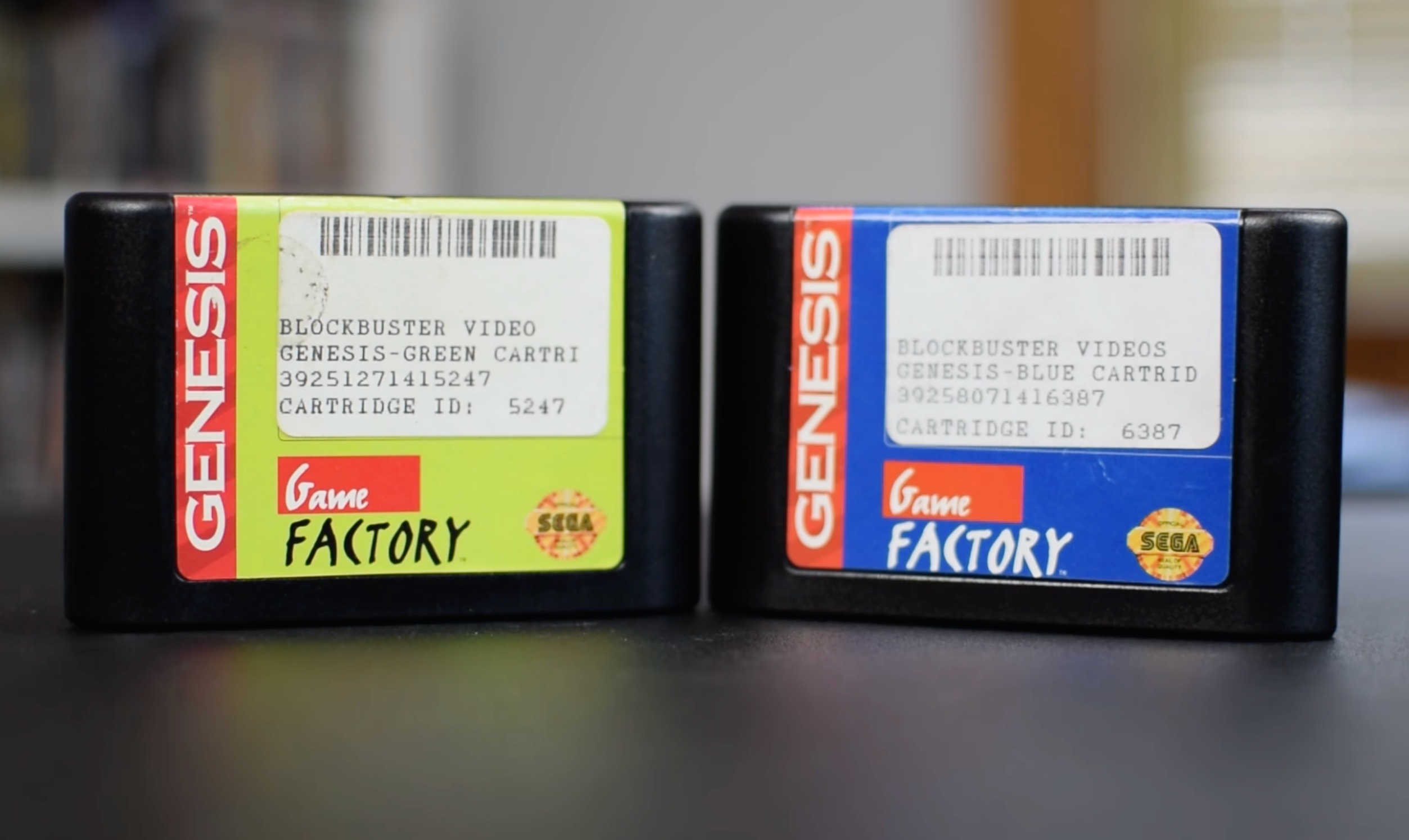
|
| HeartBeat Catalyst | A third-party Sega Mega Drive exercise peripheral with included body-mounted fitness sensors which reads heart rate, motion, and skin salinity levels for in-game feedback.[4] Developed by American video game hardware developer HeartBeat Corporation and primarily sold alongside the Personal Trainer, it was released exclusively in the United States in November 1993.[5] Notable for having a production run of only 1,000 units, and sold with the exclusive pack-in game Outback Joey, both are considered some of the rarest pieces of Mega Drive history in existence.[6] | 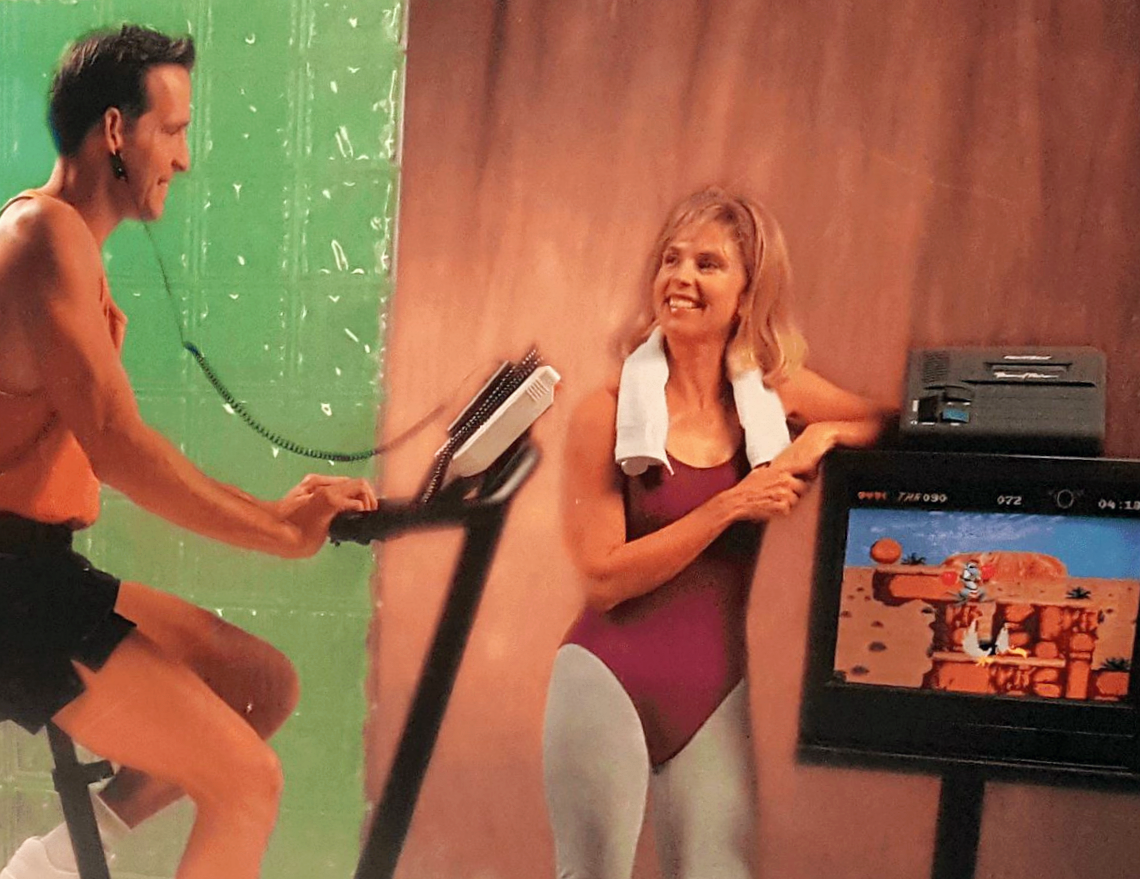
|
| LaserActive | A video game-compatible LaserDisc player designed and manufactured by Pioneer.[7] Released in Japan and North America in late 1993, the system features interchangeable hardware expansions known as PACs, which enable compatibility with Mega Drive and Mega-CD games, PC Engine and PC Engine CD-ROM² games, and a new type of LaserDisc-based format: Sega Mega LD and NEC LD-ROM².[8] | 
|
| Sega VR | An unreleased virtual reality peripheral developed by Sega of America and Ono-Sendai for the Sega Genesis.[9] Announced in 1991, the head-mounted display languished in development for a number of years, and was quietly cancelled around late 1994.[10] It is believed its cancellation was caused by technical challenges and safety concerns[11] with the then-embryonic concept of virtual reality.[12] | 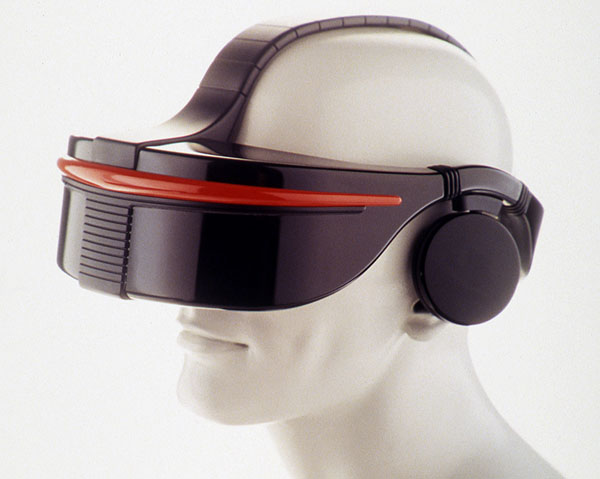
|
| Teleplay System | An unreleased Sega Mega Drive modem developed by Baton Technologies. Originally intended for a January 1993 launch[13] (later pushed back to May[14][15], then August[16]) with a suggested retail price of $69[13] (later increased to $90[17]), the Teleplay's primary selling point was its support for cross-platform multiplayer between Genesis, NES, and SNES owners, as well as providing downloadable games and content as supporting services.[13] Ultimately, issues acquiring official development licenses and Sega of America's attraction to its primary competitor - AT&T's Edge 16 - resulted in the virtually-completed accessory being scrapped entirely.[18] | 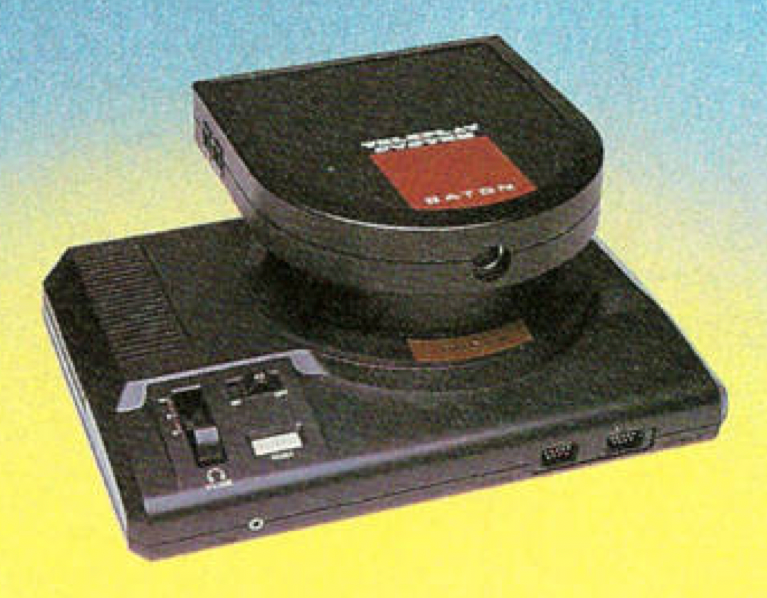
|
| Toylets | An interactive urinal video game system developed by Sega R&D1[19] and manufactured by Sega. Initially seeing a limited release in Japan in October 2011[20], the hardware is one of Sega's more curious endeavors, featuring interactive minigames controlled via the strength and direction of the user's urination. | 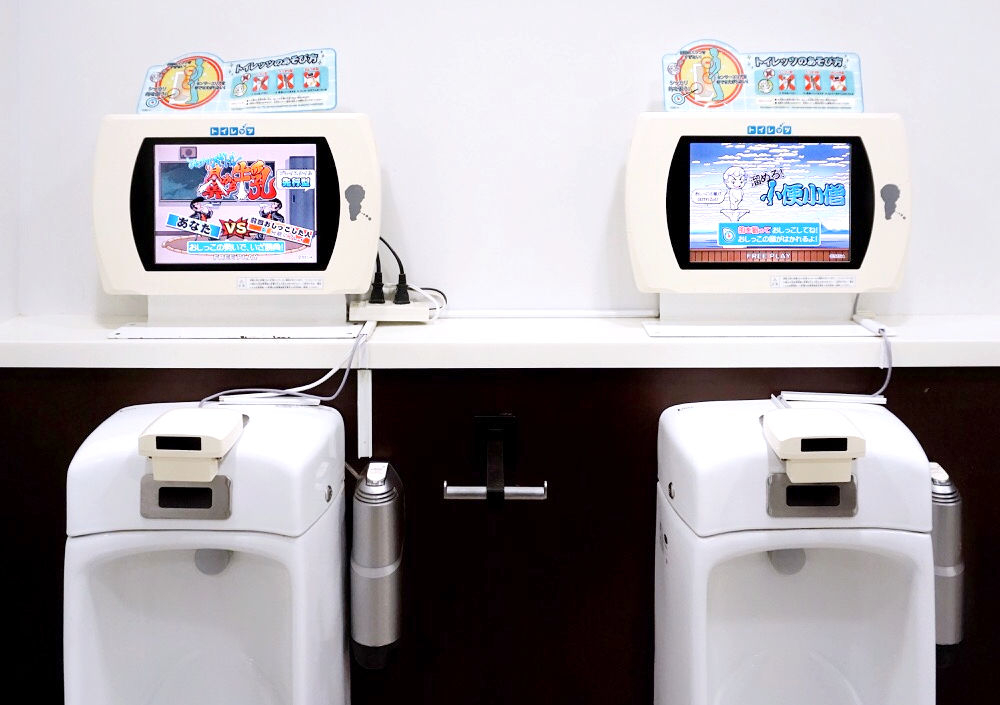
|
| Car Licence | A Sega Game Gear traffic code education program developed by System Vision and For You[21], and published by Nayuta.[22] Released exclusively in Japan in 1995, it was produced to assist players in passing their Japanese driving exams, and was generally available for rent through Mitsubishi Chemical Corporation-supported driving schools.[23] | 
|
| Divine Sealing | An unlicensed adult Sega Mega Drive vertical shoot-'em-up game developed by Studio Fazzy[24] and published by CYX. Released in Japan in May 1992[25], the game is most notable for being one of few contemporary unlicensed games to be exclusively developed and published domestically, and was one of the first unlicensed Mega Drive titles ever released. Sold at a premium price of ¥9,800[25] (the equivalent of about $85) and with notably high production values for the early unlicensed market, Divine Sealing is most remembered today for its post-level cutscenes, presented with professionally-drawn hentai artwork - and used to incentivize progression with the tease of increasingly adult images. | 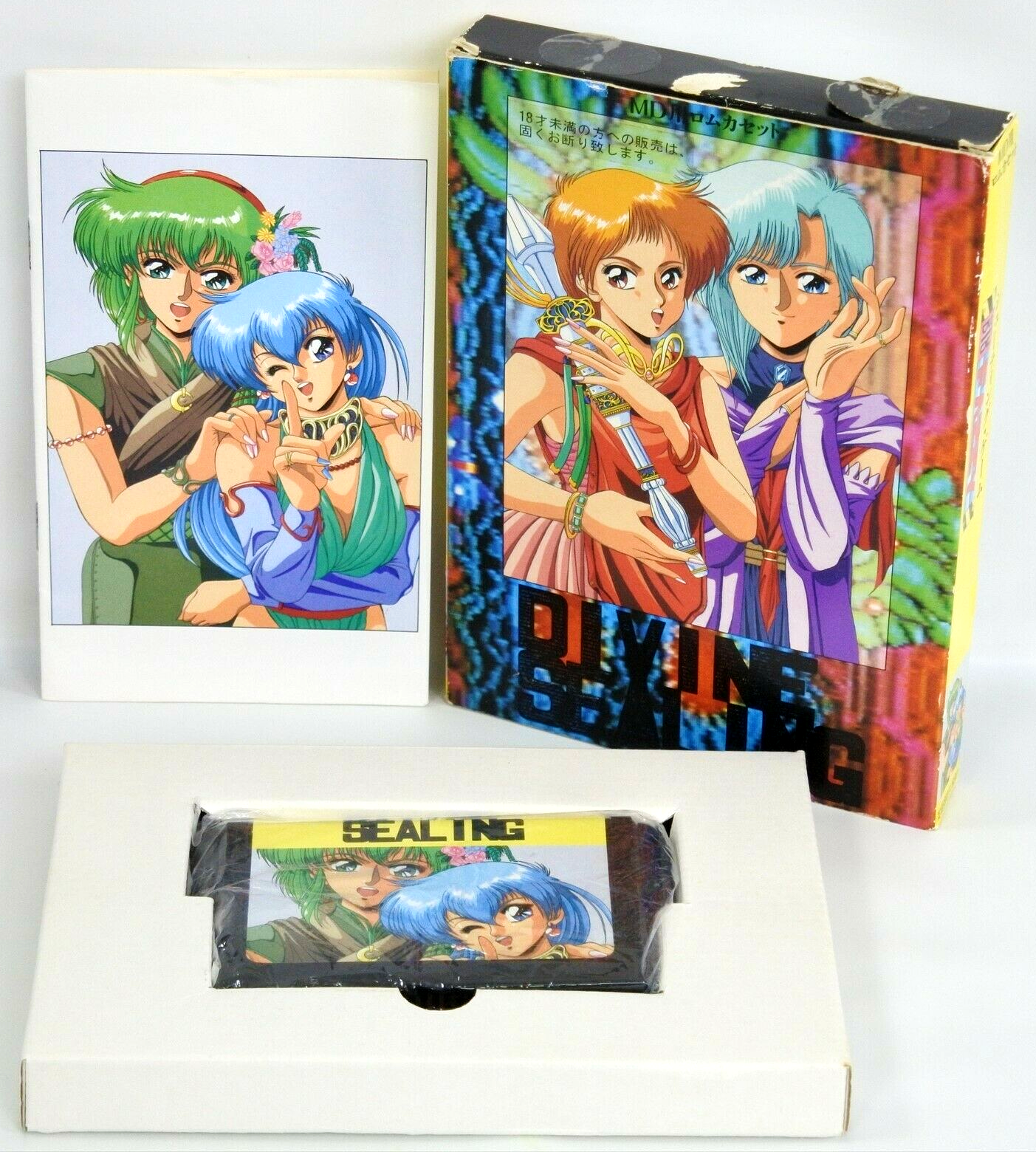
|
| Nightmare Circus | A Sega Mega Drive action beat-'em-up game developed by Funcom.[26][27][28] Beginning as an experiment by Sega of America to finish a game's design before development had even begun[29], it was originally scheduled for a North American release in Autumn 1995[30] (later pushed back to December 1995[31], and then again to April 1996[32]), but issues during development and the dwindling lifespan of the Genesis resulted in Sega backing out of the project. While left unfinished from a design standpoint, the game was stable enough on a programming level to be technically completable; eventually it was picked up for the Brazilian market by Tec Toy and saw an official boxed release there in June 1996. Six months later, Nightmare Circus did eventually see a North American release, broadcast via Sega Channel[33][34] in both the United States[35] and United Kingdom[36] as one of the system's more notable downloadable exclusives. | 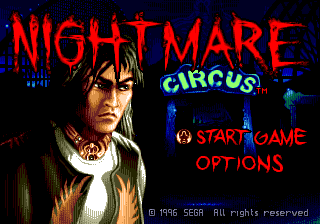
|
| Outworld 2375 AD | A Sega Mega Drive fitness science fiction driving game developed by Western Technologies[37] and published by HeartBeat Corporation. Specifically designed to utilize the fitness sensor-integrated Mega Drive peripheral HeartBeat Catalyst[38], it was released exclusively in the United States in 1994 in an extremely limited run, and is one of the single-rarest commercially released Mega Drive games in existence.[39] Currently known to have been reached store shelves in some capacity, the obscurity of Outworld 2375 AD had left its official release status shrouded in mystery for decades. While Western Technologies developers claim the game was completed but left unshipped, multiple collectors own boxed copies of the final game[40], with HeartBeat having given it a last-minute, barebones physical release locally distributed to three Target stores in Michigan in late 1994.[39][41][42] | 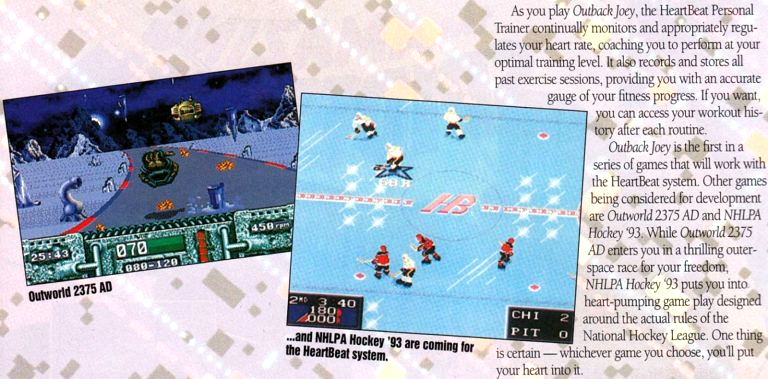
|
| Sonic Dreams Collection | A Windows and macOS PC fan game from indie development group Arcane Kids. Released in August 2015, it presents itself as a collection of four rediscovered prototype Sonic the Hedgehog games for the Sega Dreamcast, and is a surreal perspective on themes of personal identity within the Sonic fanbase. | 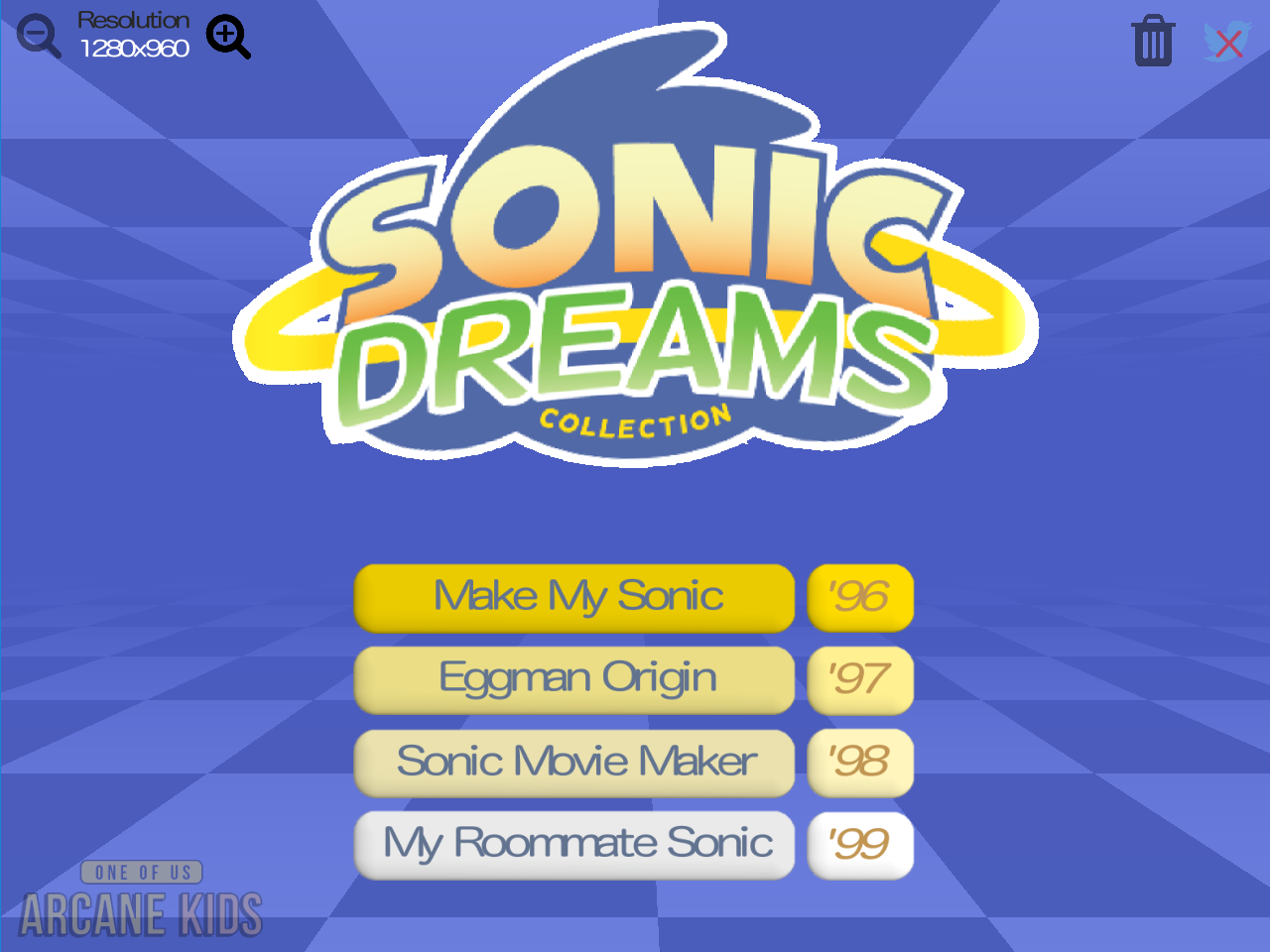
|
| Sonic Saturn | An unreleased Sega Saturn action platform game developed by Sega Technical Institute Burbank[43] and intended to be published by Sega in late 1996. Commissioned by Sega of America management earlier that year[44] to be produced as one of two potential mainline Sonic the Hedgehog titles for the system (the other being Sonic X-treme), the team planned on presenting Sonic as a dedicated three-dimensional model instead of a sprite, and the game would feature a more realistic interpretation of the character's world than seen before.[44] | 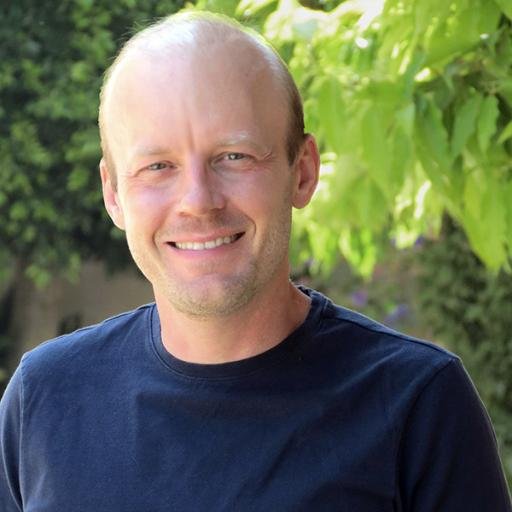
|
| Sonic Studio | An in-development fan Sonic the Hedgehog stage creation program for Windows PCs.[45] Developed and produced by independent British artist and Sonic scene member Lapper, it allows users to create entirely custom Sonic stages with intuitive menu design, extensive customization features, and a focus on ease of use. As of March 2023, Sonic Studio is still being actively developed, with the entirety of the game's planning already finalized.[46][45] | 
|
| Chris Tang | An American video game designer and former Tengen and Capcom designer, translator, and voice actor. Notable for his involvement in the design of the Sega Mega Drive games Gauntlet IV and Rampart[47][48], and for winning Sega of America's Rock the Rock competition[49][47], Tang remains active in the video game industry and is currently developing the upcoming rail shooter Strike Blazinger.[50] Tang also commentates a number of gaming competitions, and is the originator of the meme Boom Tetris for Jeff.[51] | 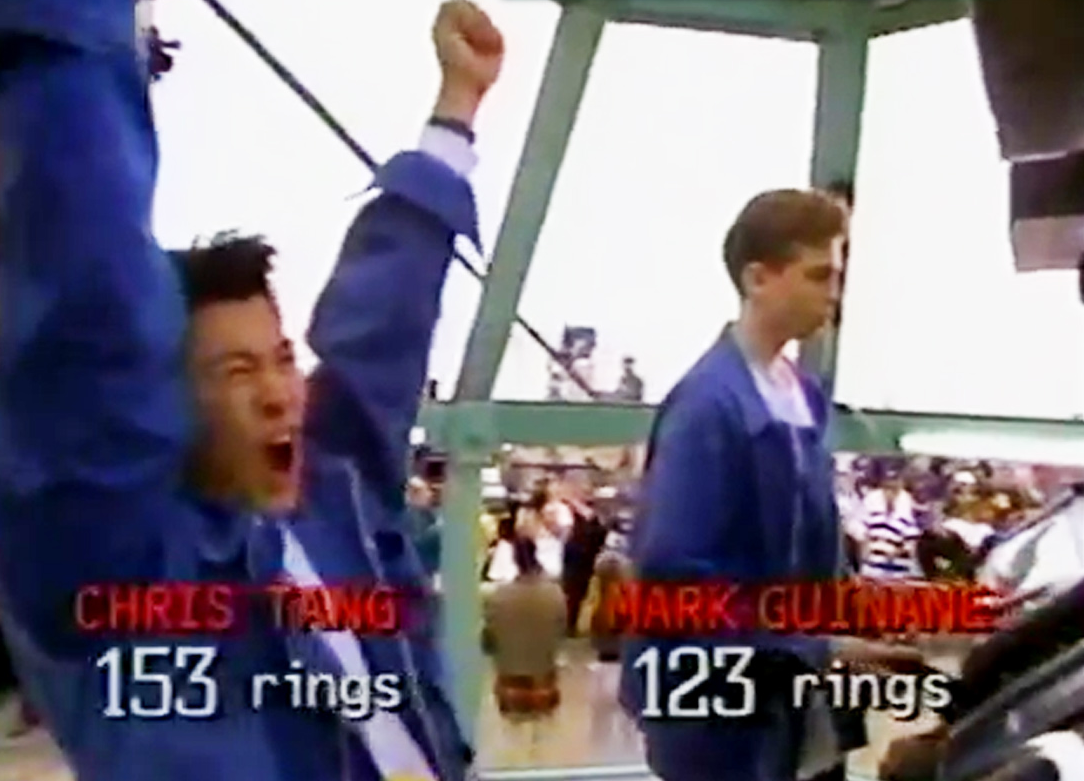
|
| Christina Coffin | An American video game programmer, software engineer, and visual effects artist.[52] With a vast wealth of programming experience dating back to the early 1980's, she was first hired by Sculptured Software in 1994, eventually migrating to Sega Technical Institute one year later.[53] Serving as the division's Technical Director, she oversaw the production of a number of Sega of America's Saturn projects, even working on the system's Western development hardware.[54] Coffin is perhaps most associated today with her "boss engine" from the cancelled Sonic X-treme[55], for which she developed one of the game's few instances of a playable framerate. While she departed Sega in 1998, Coffin remains active in the video game industry and currently specializes in rendering, optimization, low-level programming, and visual effects.[56][52] | 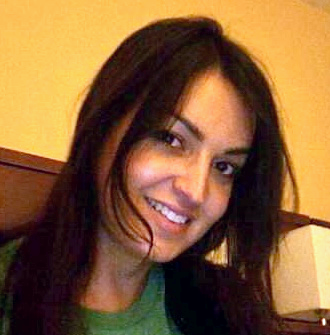
|
| David Javelosa | An American musician and former Sega of America audio director, composer, and sound designer.[57] An accomplished early electronic artist, he first began working with Sega as a contractual consultant in October 1989[58][59], and was soon tasked with providing the music for some of the company's earliest domestic Genesis releases. He would eventually be hired full-time in 1992[57] and quickly became head of the newly-created Sega Multimedia Studio.[60] His responsibilities covered the management of Sega's audio production capabilities[58], the hiring of talented musicians to support the Sega CD, and working with Sega-licensed developers to provide support for the company's audio development tools.[61] During this time, he also composed music for the Sega Channel, as well as the first revision of the North American Sega CD BIOS.[62][63] | 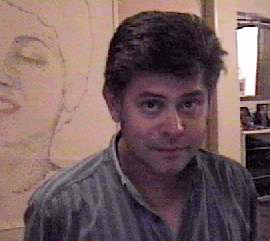
|
| Fergus McGovern | An English video game executive and founder of Probe Software, most known for his various contributions to both the British and American game software industries[64], and for his titular inclusion as a fatality in Mortal Kombat II - the Fergality.[65] | 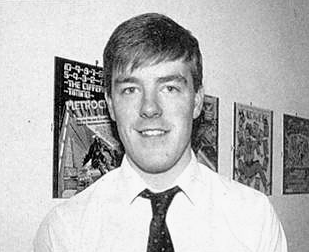
|
| Jamie Bunker | An American businessman[66] and former Renovation Products game tester and spokesperson[67], most notable for starring in a well-remembered 1991 advertising campaign for the Mega Drive horizontal shoot-'em-up Gaiares.[67][68] | 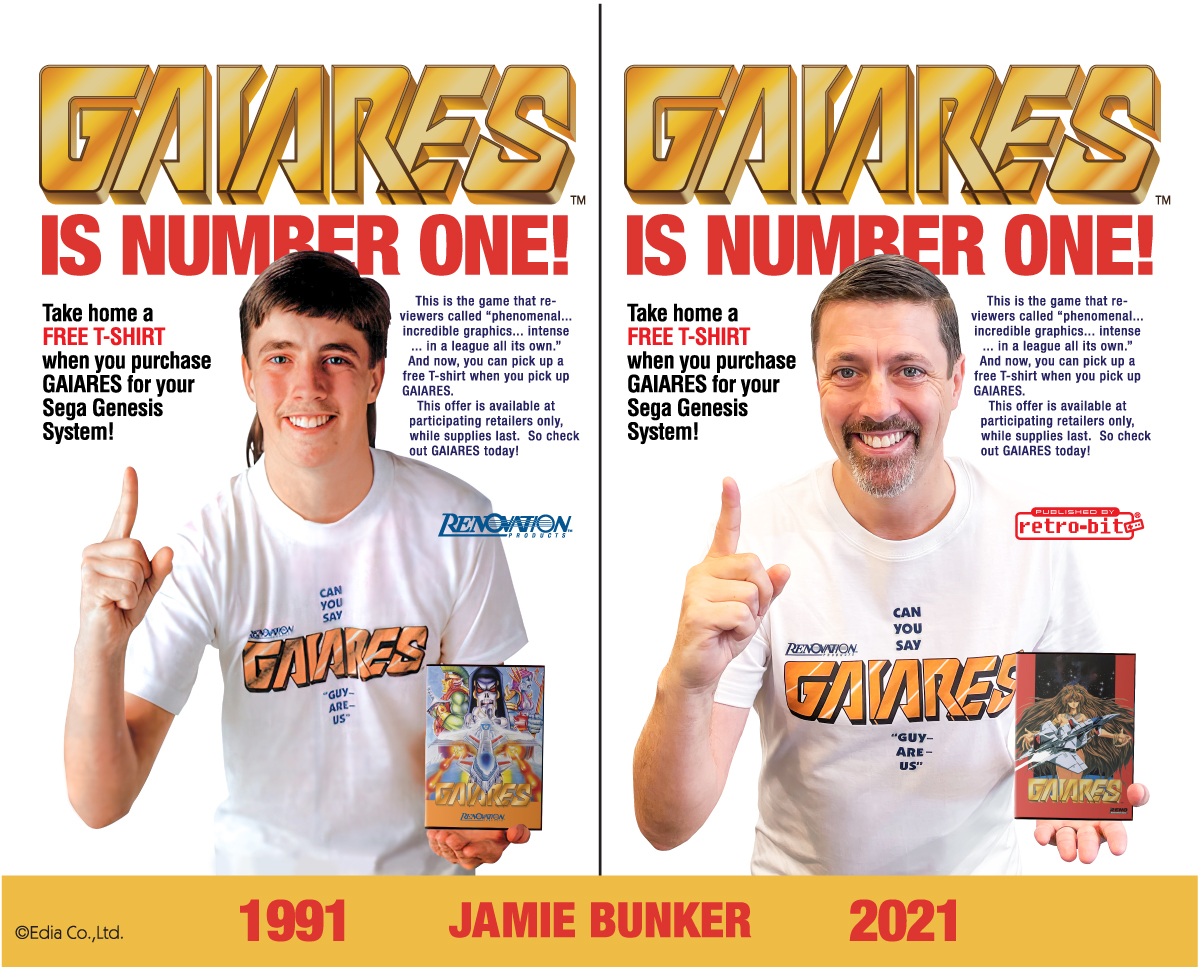
|
| Jon Burton | A British video game programmer and designer, most notable for co-founding and currently serving as Director of developer Traveller's Tales. Having accumulated a considerable amount of programming talent through his technically-impressive Sega Mega Drive games, Burton designed and programmed a number of first-party Sonic the Hedgehog games, and currently runs the YouTube channels GameHut[69] and Coding Secrets.[70] | 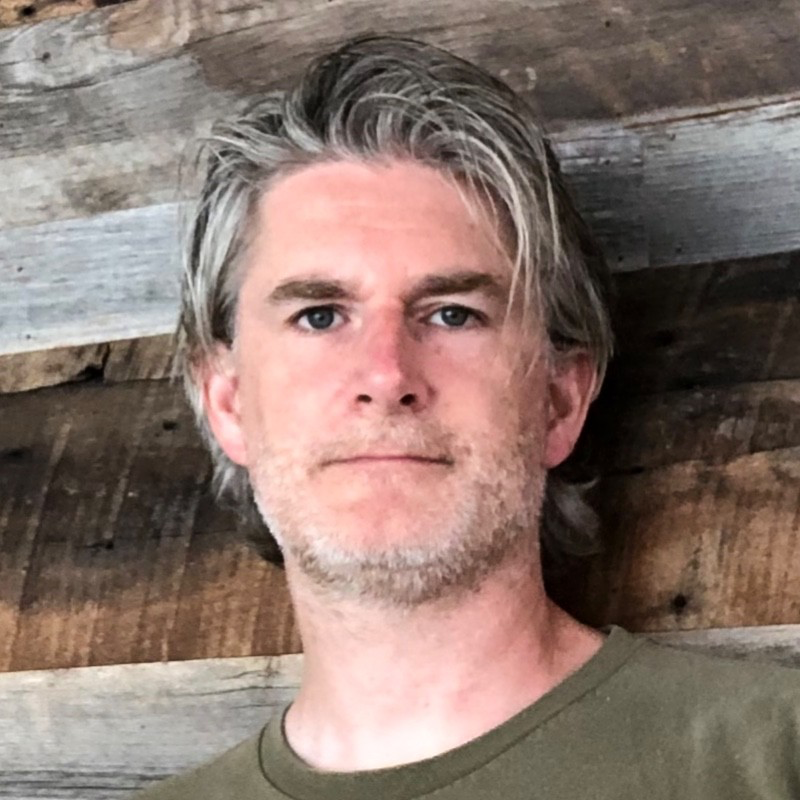
|
| Kenneth Hurley | An American businessman and former video game programmer. A professional software engineer, Hurley and fellow Electronic Arts programmer Kevin McGrath struck out on their own in October 1992[71] to cofound Futurescape Productions[72][73], a San Mateo, California-based development company[71][74] which was contracted by nearby Sega of America on a number of ambitious hardware and software projects.[75] Unfortunately, a number of complications both within Futurescape and the larger game industry resulted in the studio's closure in August 1994[76][77], with Hurley slowly migrating out of the game industry and into the tech sector in the early 2000s.[76] | 
|
| Michael Jackson | An American singer, songwriter, and dancer. Regarded as one of the most significant cultural figures of the 20th century, and one of the world’s most successful recording artists, Jackson collaborated with Sega on the production of several video games, most notably Michael Jackson’s Moonwalker[78][79][80] and Sonic the Hedgehog 3. | 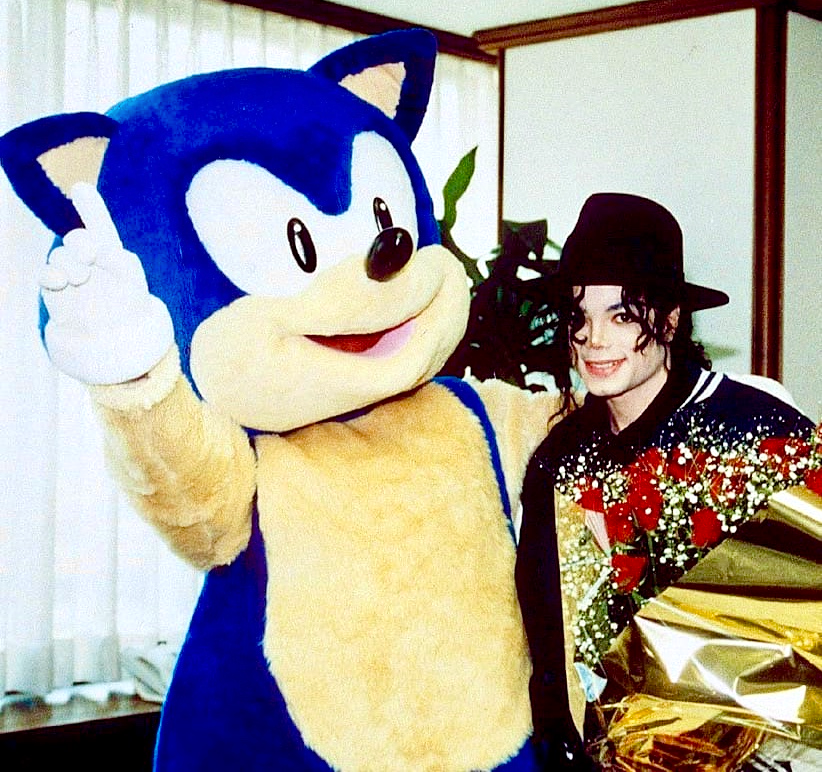
|
| Olympia | A joint venture established by Sega Enterprises and Taito to manufacture and sell the Olympia Star slot machine, bringing a form of legalized slot gambling to Japan and laying the foundations for the future medal game industry.[81] | 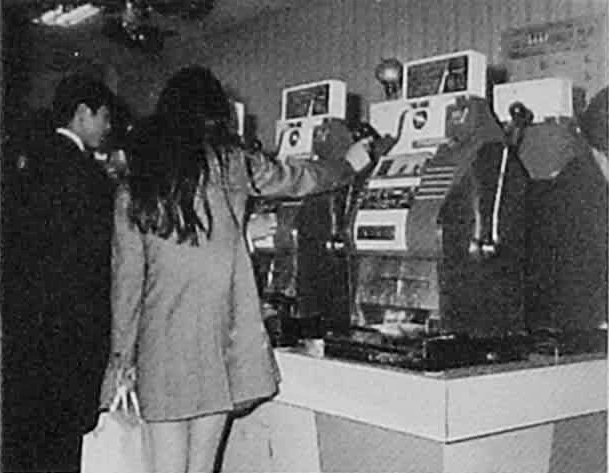
|
| Rocket Science Games | An American game developer based in California's San Francisco Bay Area.[82] Active from 1993 to 1997[83], the company generated a significant amount of hype with their Hollywood-style production and celebrity development team.[84] With near-limitless investment from Silicon Valley venture capital funds[85][86], and staffed by very few who understood video games[87], Rocket Science spent millions of dollars in the production of expensive "interactive movies" - only to see their games sell less than a few thousand copies each.[88] After this failure, the company spent the next year languishing in financial issues[89], and in late 1996 would end up being virtually acquired by SegaSoft.[90][91] While Rocket Science's later titles did see moderately more success, their performance was still far below expectations, and the developer would be forced to close its doors in April 1997.[83] | 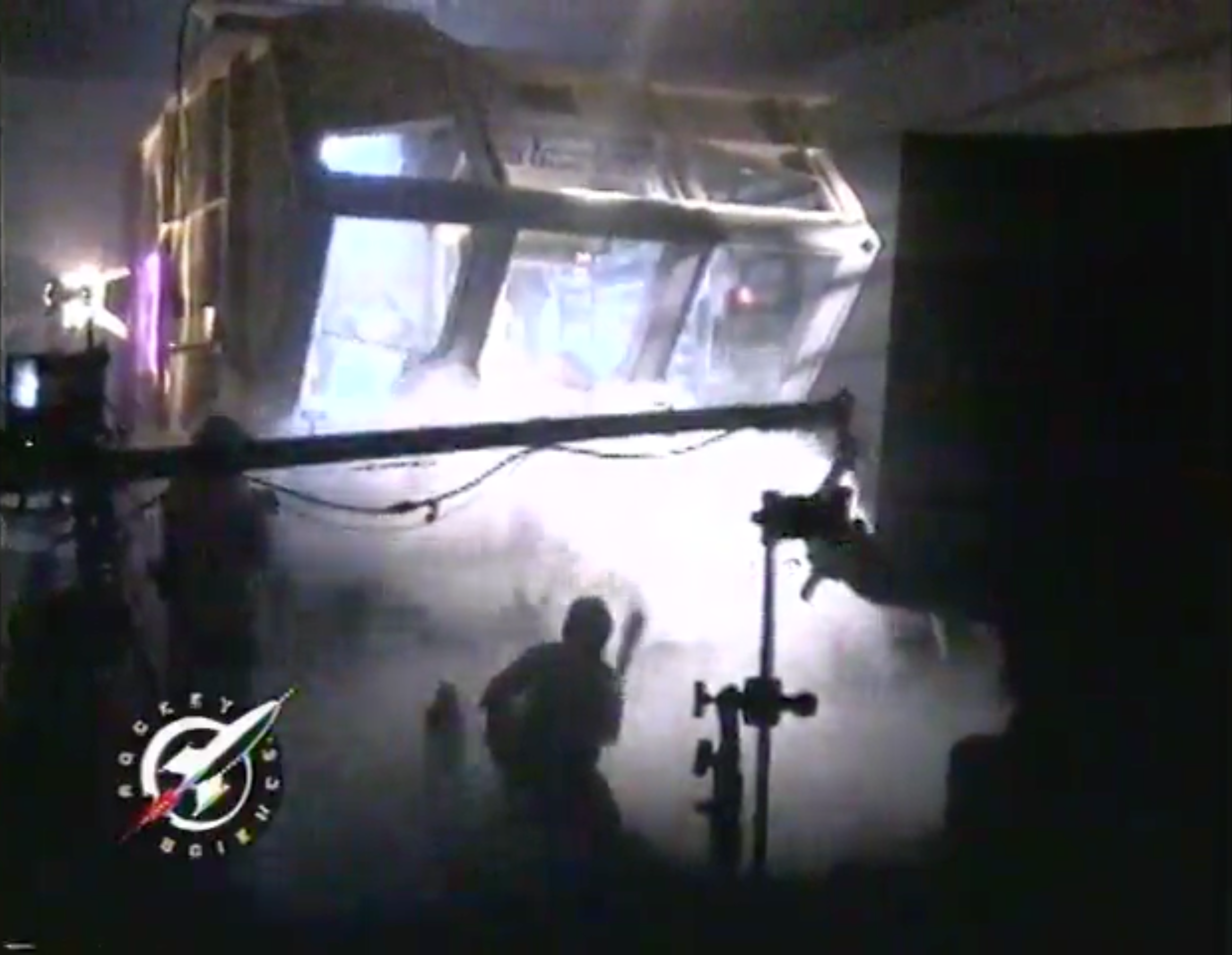
|
| Sega Girls Task Force | An internal Sega of America video game production team[92] established to both address the issue of then-limited female participation in video gaming, and research the viability of games developed with a female audience in mind. The team was directly involved with the production of three Western-developed Mega Drive games, and advised a number of third-party studios on issues of inclusion and accessibility.[93] | 
|
| Sega Technical Institute Burbank | A satellite studio of Sega Technical Institute headquartered in Burbank, California and staffed by Peter Morawiec, Adrian Stephens, and Howard Drossin. Established in early 1996 to work on a potential 3D entry in the Sonic the Hedgehog franchise, it was responsible for the Saturn games Comix Zone and Sonic Saturn[43], but political issues within Sega resulted in the permanent shelving of all the studio's projects in mid 1996.[94] While asked to remain in operation to support the launch of the Dreamcast, the staff ultimately closed the studio in December that year, with all three founding Luxoflux[95] the following month.[94] | 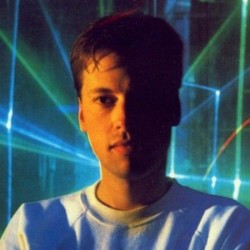
|
| Sonic Studio | A division of Sega of America dedicated to handling the Sonic the Hedgehog franchise.[96] Headed by Chief Brand Officer and Sega of America Senior Vice President Ivo Gerscovich[96], and managed by Sonic Team veterans Takashi Iizuka and Kazuyuki Hoshino[97], the studio ensures the brand is presented consistently[96], handles marketing, merchandise, and press releases[96], and has a significant hand in the planning of new Sonic the Hedgehog games.[97] It also produced the award-winning television series Sonic Boom.[96] | 
|
| STT Video Partners | An American joint venture between Sega Channel Management, Time Warner, and Tele-Communications Inc.[98][99] which oversaw both the inception and operation of the Sega Channel,[100][101] as well as acting as registered owners of its trademarks.[102] Headquartered in New York City and headed by CFO Kevin Sheeran,[103][104] the company handled much of the service's marketing in the United States, and was also responsible for licensing out the Sega Channel's foreign broadcast rights.[105] | 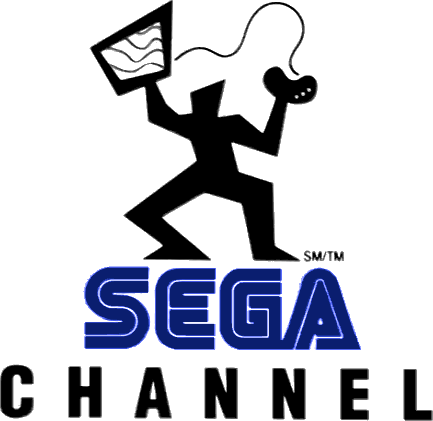
|
| Kids Go HoJo with Sega | A Sega of America-sponsored advertising campaign for the American hotel/motel chain Howard Johnson's, produced by Californian marketing firm Strottman International[106] and run during the summers of 1993, 1994, and 1995. As one of the first promotions in the hospitality industry to so prominently combine licensed characters with marketing directed at children (in this case, using Sonic the Hedgehog to advertise on-site Game Gear rentals), the campaign was a commercial and critical success, and still enjoys a positive legacy in the marketing community.[107] | 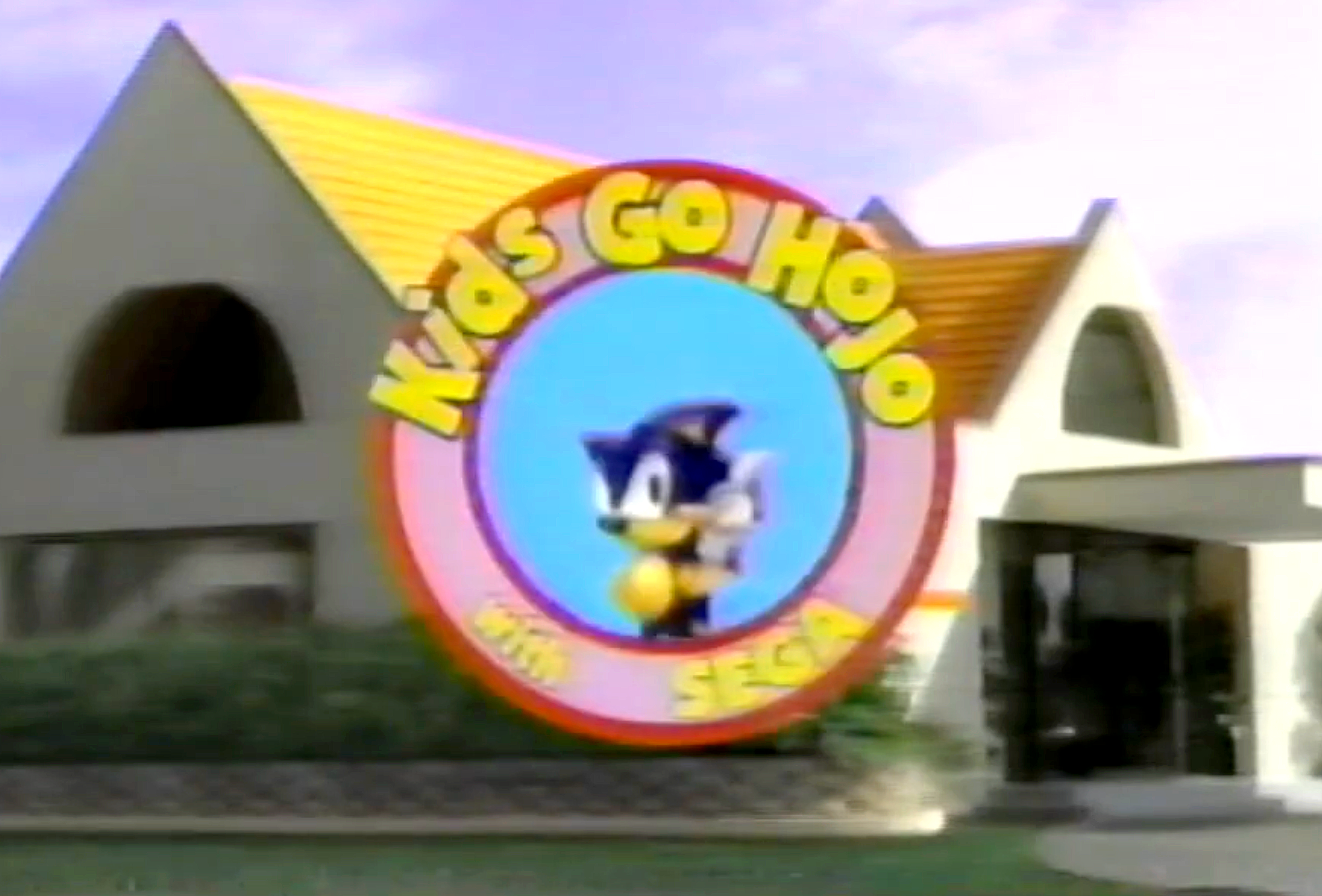
|
| Rock the Rock | An American video game tournament organized by Sega of America in promotion of upcoming release of Sonic & Knuckles.[108] Held on San Francisco's Alcatraz Island and themed around a high-stakes heist, the tournament was one of the largest and most elaborate promotions undertaken by the company, and was aired in a televised MTV special one week later.[109][110] | 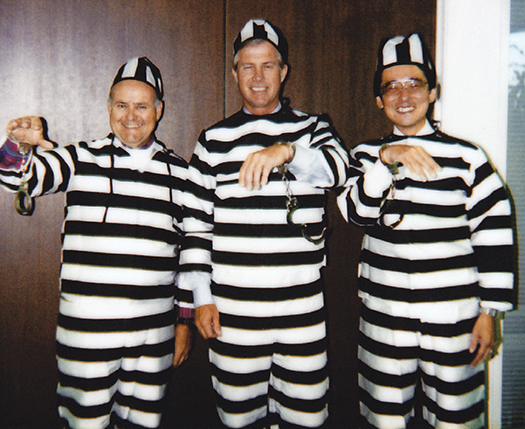
|
| Sonic the Hedgehog 3/Development/Music | The music of Sonic the Hedgehog 3 stands as an ongoing conundrum for Sega due to certain executive decisions made during development. Due to the last-minute inclusion of the popular music artist Michael Jackson and his sound team, and the consequences of his subsequent departure before the game's release[111], it is not fully understood how much of the soundtrack is currently owned by the company. As time has passed, a number of Sonic 3's development staff have commented on the issue[112] - with some providing conflicting information - but all confirming Jackson's involvement in one of the most curious and complicated moments of the franchise's history.[113] | 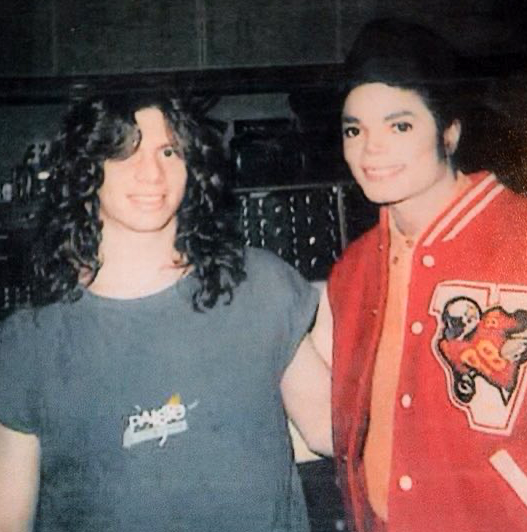
|
| Sonic the Hedgehog Spinball/Development | Two versions of Sonic the Hedgehog Spinball are commonly available: an "earlier" ROM which features two short jingles previously used in Sonic the Hedgehog, and a "later" ROM which replaces the jingles with new songs. As the former jingles were not composed in-house at Sega, instead being created by Masato Nakamura of the Japanese pop band Dreams Come True, Sega did not hold the license to use the music in other games something the developers at Sega Technical Institute were unaware of. When Hirokazu Yasuhara revealed this fact during the game's official wrap party, STI's Howard Drossin was forced to compose last-minute replacements for the offending tracks.[114] This earlier ROM leaked onto the internet as early as November 6, 1993[115], with the common belief that it was released in limited quantities before being quickly pulled and replaced with a later revision. However, modern investigation has also revealed information which identifies the ROM as being a late prototype stolen from Sega of America's BBS servers and released by the scene group SNEAKERS.[116] | 
|
| Sonic Mars | An unreleased Sega 32X action-platform game developed by Sega Technical Institute and scheduled to be published as a launch game for the system.[117] Intended to be the first 3D entry in the Sonic the Hedgehog series, the commercial failure of the 32X and a number of development issues resulted in the game eventually being moved to the Sega Saturn - where it would evolve into the equally-unreleased Sonic X-treme.[118] | 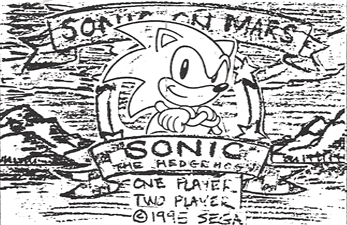
|
| Sonic X-treme | An unreleased Sega Saturn action platform game developed by Sega Technical Institute and scheduled to be published by Sega of America in late 1996. An evolution of the previous Sonic Mars, renamed to signify the move to more powerful hardware, X-treme suffered through one of the company's most troubled development cycles.[119] From platform changes which saw months of work scrapped, to a displeased management team and the overworking of its lead developers to serious illness, the game has become perhaps the most infamous cancelled Sonic the Hedgehog game, and unwillingly personifies much of the problems related to Sega of America's corporate structure for the following decade.[118] Following a showing at E3 1996, X-treme was aggressively pushed by Sega of America in an attempt to boost flagging Sega Saturn sales during the Christmas 1996 season. Despite ambitious claims and marketing hype, the project was quickly shelved after it became clear to management that the project would not meet the Christmas deadline. Instead, a Saturn port of Sonic 3D: Flickies' Island was released in its place.[119] | 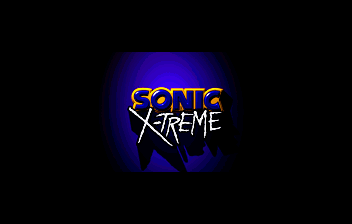
|
| Sonic the Hedgehog (ice cream bar) | A Sonic the Hedgehog-themed ice cream bar manufactured by Wells Enterprises' Blue Bunny brand[120] and first released in 1995. While a financial success for the company, a combination of the character's high consumer recognition and the bar's production issues (most notably its drooping or misaligned gumball eyes) eventually saw it develop a curious cultural relevancy among the larger Sonic fanbase, with its frequently misshapen appearance even being celebrated by Sega themselves. Today, the Sonic the Hedgehog ice cream bar is still available for purchase, and continues to be a staple of the American ice cream truck.[121] It has remained in continual production since it was launched over two decades ago, and is commonly recognized as one of the most successful character-based ice cream bars ever made.[122][123] | 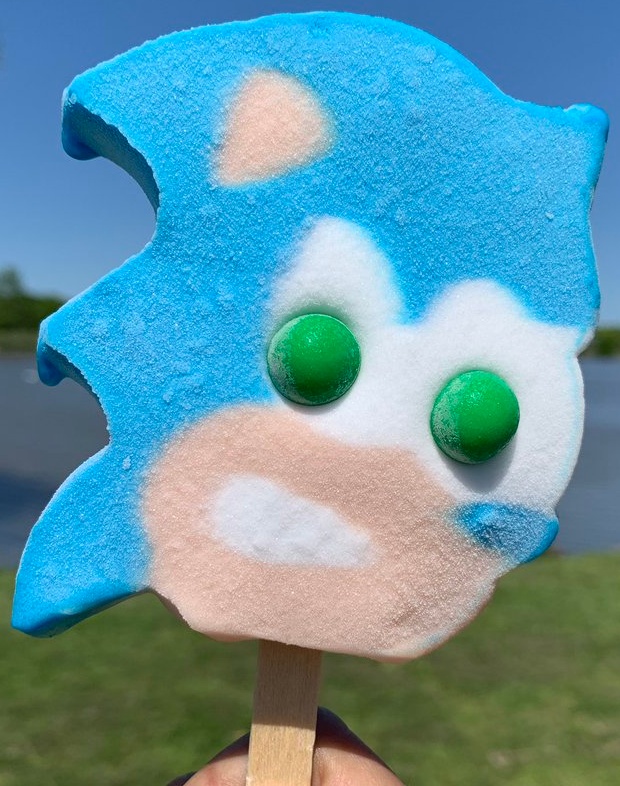
|
| Stormlord/History | Frequently marketed as one of the Mega Drive's first "adult" titles, the history of Stormlord has long fascinated the gaming community, resulting in a number of misconceptions about the game's development.[124] Thankfully, the game's lead programmer Kevin Seghetti has since provided a wealth of knowledge and insight into Stormlord's history through various interviews and statements.[125] | 
|
| Vectorman/Development | As one of the Mega Drive's most technically impressive Western-designed video games, the development of Vectorman was one of BlueSky Software's greatest achievements on Sega's 16-bit platform, setting a new precedent for technical accomplishments and inspiring a number of fellow developers to really begin pushing the hardware's limits.[126][127] | 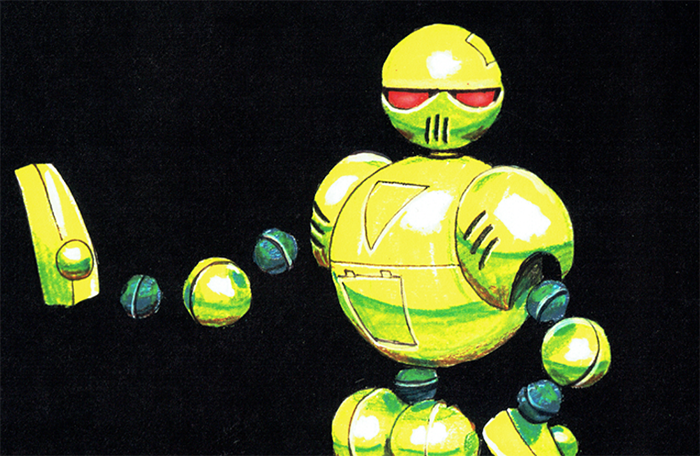
|
| Endorsements | A list of official endorsements of Sega products by notable individuals, such as Joe Montana or John Madden. | 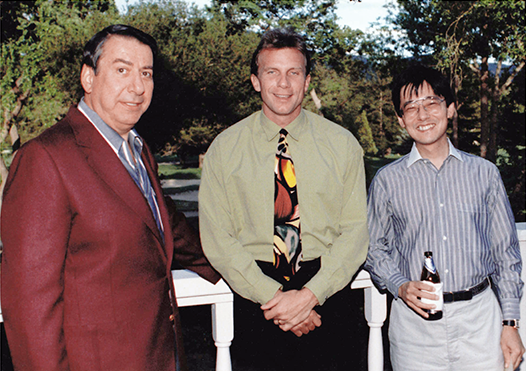
|
| Gambling | A list of Sega gambling machines, such as slot machines and pachinko games. | 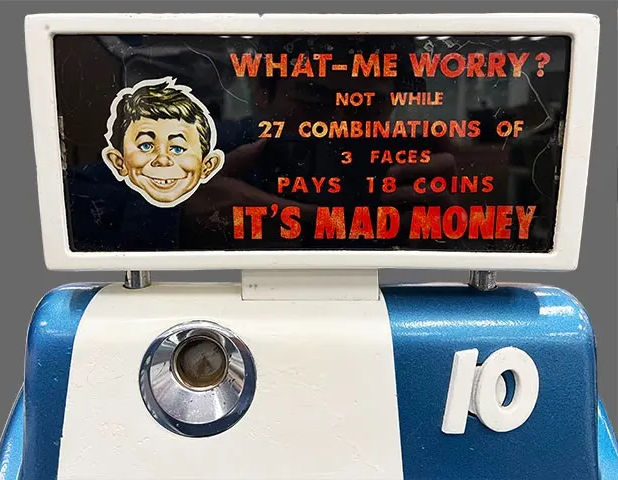
|
| Lawsuits | A list of notable lawsuits involving Sega, such as the famous Sega Enterprises Ltd. v. Accolade, Inc. | 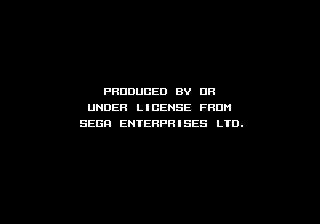
|
| References to Sega | A list of notable references to Sega found in television shows, films, and even other video games. | 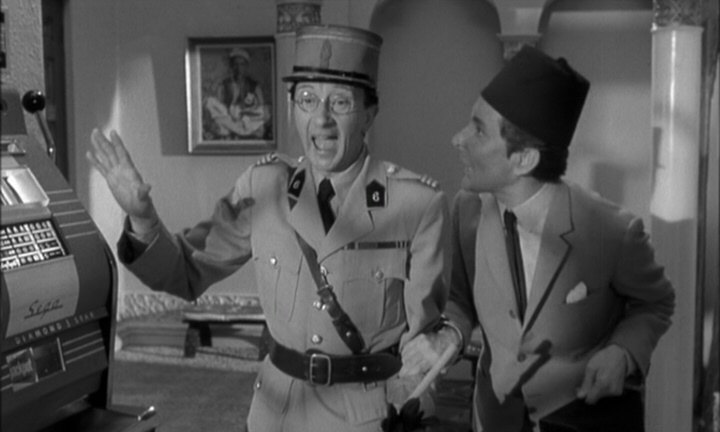
|
| References to Sonic | A list of notable references to Sonic the Hedgehog found in television shows, films, and even other video games. | 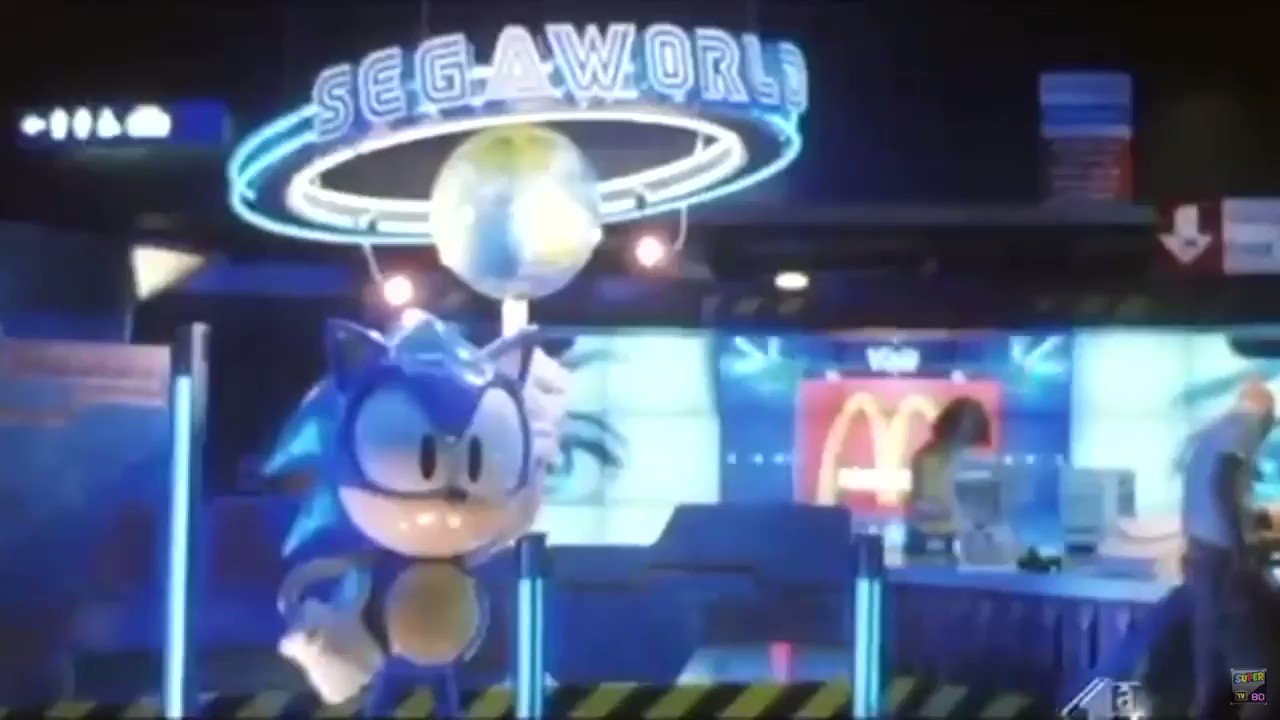
|
References
- ↑ EGM², "July 1994" (US; 1994-07-19), page 28
- ↑ Sega Visions, "August/September 1994" (US; 1994-xx-xx), page 8
- ↑ https://www.youtube.com/watch?v=nrUWIHasHPQ (Ghostarchive)
- ↑ Sega Visions, "October/November 1993" (US; 1993-xx-xx), page 108
- ↑ http://videogamekraken.com/heartbeat-personal-trainer-catalyst (Wayback Machine: 2021-04-14 05:43)
- ↑ https://www.sega-16.com/2004/08/genesis-accessory-peripheral-guide/ (Wayback Machine: 2013-10-11 18:57)
- ↑ https://laseractive.wordpress.com/interviews/ (Wayback Machine: 2020-11-11 21:40)
- ↑ https://laseractive.wordpress.com/about-the-laseractive/ (Wayback Machine: 2024-08-14 17:33)
- ↑ https://medium.com/ghvr/tc-shanghai-2016-8ad6c097262d (Wayback Machine: 2024-04-18 18:10)
- ↑ http://sega-16.com/feature_page.php?id=5&title=Sega%20VR%3A%20Great%20Idea%20or%20Wishful%20Thinking%3F (Wayback Machine: 2010-01-14 19:13)
- ↑ Interview: Bandit (2006-07-25) by Sega-16
- ↑ https://medium.com/ghvr/tc-shanghai-2016-8ad6c097262d (Wayback Machine: 2021-04-28 01:10)
- ↑ 13.0 13.1 13.2 GamePro, "April 1992" (US; 1992-xx-xx), page 16
- ↑ Mega Play, "January 1993" (US; 199x-xx-xx), page 20
- ↑ Electronic Gaming Monthly, "November 1992" (US; 1992-xx-xx), page 50
- ↑ Electronic Gaming Monthly, "1993 Video Game Buyer's Guide" (US; 199x-xx-xx), page 74-75
- ↑ File:I-d-magazine-may-1993-2-.pdf
- ↑ http://www.lostlevels.org/200310/200310-baton.shtml (Wayback Machine: 2003-11-12 15:12)
- ↑ http://buzz.sega.jp/title_list/ (Wayback Machine: 2017-09-15 18:00)
- ↑ https://sega.jp/history/arcade/product/8722/
- ↑ http://gdri.smspower.org/wiki/index.php/System_Vision
- ↑ File:CarLicense GG JP Cart.jpg
- ↑ File:CarLicence GG Famitsu1995 693.jpg
- ↑ File:DivineSealing MD spine 1.png
- ↑ 25.0 25.1 http://sob.xxxxxxxx.jp/enter/div.htm (Wayback Machine: 2011-07-22 13:08)
- ↑ http://www.funcom.com/corporate/games.html (Wayback Machine: 1998-01-19 22:00)
- ↑ http://www.funcom.com/corporate/nightmare.html (Wayback Machine: 1998-01-19 23:05)
- ↑ http://www.funcom.com/corporate/published/nightmare.html (Wayback Machine: 2000-08-18 05:47)
- ↑ File:HistoriemOmSega2 SE Book.pdf
- ↑ 1995 Sega Product Catalog (US), page 38
- ↑ Sega Visions, "September 1995" (US; 1995-xx-xx), page 100
- ↑ Sega FY 1997 Brand Review, page 103
- ↑ http://www.sega.com/channel/now/4.html (Wayback Machine: 1997-06-05 18:45)
- ↑ Sega Channel
- ↑ Sega Channel US schedule
- ↑ Sega Channel UK schedule
- ↑ @IsaiahVinson1 on Twitter (Wayback Machine: 2023-03-11 09:04)
- ↑ Sega Visions, "October/November 1993" (US; 1993-xx-xx), page 110
- ↑ 39.0 39.1 https://www.reddit.com/r/lostmedia/comments/i3j51c/sega_genesis_outworld_2375_ad_possibly_the_rarest/ (archive.today)
- ↑ https://gamesniped.com/2008/10/05/sega-genesis-outworld-2375-ad/ (Wayback Machine: 2013-11-21 14:40)
- ↑ https://www.reddit.com/r/lostmedia/comments/i43hwz/outworld_2375_ad_sega_genesis_newspaper_ad_update/ (archive.today)
- ↑ https://www.reddit.com/r/lostmedia/comments/i7sm8p/outworld_sega_genesis_game_barcode_and_more_info/ (archive.today)
- ↑ 43.0 43.1 Interview: Peter Morawiec (2007-04-20) by Sega-16
- ↑ 44.0 44.1 Interview: Peter Morawiec (2006-01-11) by hxc
- ↑ 45.0 45.1 https://forums.sonicretro.org/index.php?threads/sonic-studio.38013/
- ↑ https://sonicstudiofangame.weebly.com/information.html (Wayback Machine: 2023-03-02 23:09)
- ↑ 47.0 47.1 https://fancons.com/guests/bio/1793/christophe-tang
- ↑ http://www.ivghof.info/classes/2016/chris-tang/
- ↑ https://www.linkedin.com/pulse/esports-vs-chris-tang-steve-deluca-mba-pmp/
- ↑ https://www.strikeblazinger.com
- ↑ https://tetrisinterest.com/boom-tetris-for-jeff/
- ↑ 52.0 52.1 Interview: Christina Coffin (2011-03-10) by H. Brun
- ↑ https://www.linkedin.com/in/christinacoffin/details/experience/
- ↑ https://www.linkedin.com/in/christinacoffin/
- ↑ https://forums.sonicretro.org/index.php?threads/presenting.7325/page-3#post-128745 (Wayback Machine: 2023-03-01 03:26)
- ↑ https://www.gamedeveloper.com/audio/gdc-2014-adds-board-members-calls-for-talk-submissions (Wayback Machine: 2022-07-05 06:06)
- ↑ 57.0 57.1 https://www.linkedin.com/in/david-javelosa-a6a1171/details/experience/
- ↑ 58.0 58.1 http://javelosa.com/DJ/consulting.htm (Wayback Machine: 2022-08-16 18:34)
- ↑ https://www.facebook.com/javelosa.david/about_work_and_education
- ↑ Interview: David Javelosa (2008-07-02) by Sega-16
- ↑ Interview: David Javelosa (2023-11-12) by Alexander Rojas
- ↑ http://javelosa.com/DJ/production.htm (Wayback Machine: 2022-12-25 00:07)
- ↑ https://www.youtube.com/watch?v=pKLKquCbzJ4 (Ghostarchive)
- ↑ File:ProbeSoftware AmstradUser1988-08 article.pdf
- ↑ Fergus McGovern#Cameos
- ↑ https://contactout.com/JamesE-Bunker-14303112
- ↑ 67.0 67.1 Interview: Jamie Bunker (2021) by Retro-Bit
- ↑ http://cinnamonpirate.com/2007/07/unpublished-the-real-jamie-bunker/ (Wayback Machine: 2010-10-30 20:12)
- ↑ https://www.youtube.com/c/GameHut/about
- ↑ https://www.youtube.com/c/CodingSecrets/about
- ↑ 71.0 71.1 https://opencorporates.com/companies/us_ca/C1825862 (Wayback Machine: 2021-05-09 22:23)
- ↑ https://www.kennethhurley.com/blog/meta-disaster-or-5th-time-s-a-charm-for-vr-ar (Wayback Machine: 2024-09-25 07:43)
- ↑ https://www.linkedin.com/in/kmcgrath/details/experience/
- ↑ http://www.drawrick.com/videogamegraphics2D3D.html (Wayback Machine: 2021-05-09 22:29)
- ↑ Futurescape Productions
- ↑ 76.0 76.1 https://www.linkedin.com/in/klhurley/details/experience/
- ↑ https://www.linkedin.com/in/kmcgrath/
- ↑ File:BangorDailyNews US 1990-01-17; Page 19.png
- ↑ File:SunHerald US 1990-01-18; Page 10 (B-2).png
- ↑ File:DetroitFreePress US 1990-12-13; Page 36 (3C).png
- ↑ https://blog.goo.ne.jp/nazox2016/e/d2691f40123ae387fedcc2b567659706
- ↑ https://www.pch.net/resources/NSFNET/regional-techs.94.02 (Wayback Machine: 2022-12-27 22:52)
- ↑ 83.0 83.1 https://www.wired.com/1997/04/rocket-science-takes-a-dive/ (Wayback Machine: 2020-11-30 09:28)
- ↑ http://variety.com/1993/biz/news/rocket-science-taps-h-wood-talent-for-cd-games-109022/ (Wayback Machine: 2017-02-22 02:27)
- ↑ https://www.filfre.net/2021/11/boffo-games/ (Wayback Machine: 2022-12-25 16:28)
- ↑ https://venturebeat.com/entrepreneur/youre-not-as-good-as-the-press-thinks/
- ↑ https://steveblank.com/2009/07/16/rocket-science-5-who-needs-domain-experts/ (Wayback Machine: 2022-10-05 02:41)
- ↑ https://www.badgamehalloffame.com/loadstar-the-legend-of-tully-bodine/ (Wayback Machine: 2024-03-02 18:19)
- ↑ https://steveblank.com/2011/02/03/vc’s-are-not-your-friends/ (Wayback Machine: 2022-12-25 12:05)
- ↑ Press Release: 1996-08-13: SEGASOFT TO PUBLISH FOUR ROCKET SCIENCE GAMES TITLES; ACQUIRES STARHILL BRAND
- ↑ https://epdf.pub/the-kingmakers-venture-capital-and-the-money-behind-the-net.html (Wayback Machine: 2023-02-07 08:04)
- ↑ https://archives.museumofplay.org/repositories/3/resources/254 (Wayback Machine: 2023-01-03 12:56)
- ↑ https://www.polygon.com/features/2019/5/27/18526122/sega-girls-task-force-female-players (Wayback Machine: 2022-11-29 00:26)
- ↑ 94.0 94.1 Interview: Peter Morawiec (2000-12-27) by ICEknight
- ↑ Interview: Stieg Hedlund (2006-12-15) by Sega-16
- ↑ 96.0 96.1 96.2 96.3 96.4 https://clios.com/clio_juror/nojs/1154 (Wayback Machine: 2021-07-19 00:55)
- ↑ 97.0 97.1 https://zippospeaks.blogspot.com/2021/02/sonics-30th-anniversary-and-what-to.html
- ↑ https://transition.fcc.gov/transaction/aol-tw/exparte/tw_response071800.pdf (Wayback Machine: 2024-10-08 16:15)
- ↑ https://avisbudgetgroup.gcs-web.com/static-files/faf7412d-81bc-467f-b1dc-ffa281bda811
- ↑ https://www.sec.gov/Archives/edgar/data/750004/000075000418000011/sgms1231201710k.htm (Wayback Machine: 2023-03-07 19:05)
- ↑ https://www.linkedin.com/in/lenorewashingtongraham1/details/experience/
- ↑ File:SegaChannel US Flyer 1997-08-15 1997-09-11.pdf, page 2
- ↑ http://www.f-cca.com/downloads/2008-highlights.pdf (Wayback Machine: 2013-05-24 18:54)
- ↑ https://www.pgridigitallibrary.com/uploads/4/3/1/5/43157305/sheehan_kevin_september-october_2016.pdf (Wayback Machine: 2024-07-05 00:01)
- ↑ Press Release: 1996-05-31: Shaw Launches Sega Channel in Ontario
- ↑ https://prabook.com/web/kenneth_james.strottman/177475 (Wayback Machine: 2021-10-26 17:10)
- ↑ http://barryparrish.com/success-stories.html (Wayback Machine: 2022-11-29 11:41)
- ↑ File:EGM US 065.pdf, page 189
- ↑ Sega Visions, "December/January 1994/1995" (US; 1994-xx-xx), page 6
- ↑ File:MTV'SRocktheRockSonic&Knuckles1994 US Video.mp4
- ↑ M Sakazaki (2010). Memories of Michael Jackson
- ↑ https://testkitchen.huffingtonpost.com/michaeljacksonsonic/
- ↑ M Sakazaki (2010). Memories of Michael Jackson
- ↑ Interview: Craig Stitt (2001-01-23) by ICEknight
- ↑ http://www.isc.meiji.ac.jp/~sumwel_h/doc/cases/Sega_1995_SD_N-California.htm (Wayback Machine: 2023-12-29 02:49)
- ↑ http://www.lostlevels.org/200403/200403-xtreme.shtml (Wayback Machine: 2023-09-01 08:21)
- ↑ 118.0 118.1 http://lostlevels.org/200403/200403-xtreme.shtml (Wayback Machine: 2023-11-29 17:57)
- ↑ 119.0 119.1 http://www.senntient.com:80/projects/xtreme/FAQ.html (Wayback Machine: 2011-03-17 06:48)
- ↑ https://www.bluebunny.com/flavor/sonic-bar (Wayback Machine: 2017-09-01 20:33)
- ↑ https://www.reddit.com/r/SonicTheHedgehog/comments/hccyi4/report_the_sonic_the_hedgehog_ive_cream_bar_with/ (archive.today)
- ↑ https://www.youtube.com/watch?v=4e9Y3mO6an0 (Ghostarchive)
- ↑ @mikeoholic on Twitter (Ghostarchive)
- ↑ https://www.gamingalexandria.com/wp/2019/01/the-history-of-stormlord/ (Wayback Machine: 2024-02-04 10:44)
- ↑ http://gdri.smspower.org/wiki/index.php/Interview:Kevin_Seghetti (Wayback Machine: 2021-06-08 05:24)
- ↑ https://thegameofnerds.com/2021/06/29/vectorman-genesis-climate-activist-turns-25/ (Wayback Machine: 2024-05-10 04:55)
- ↑ http://illustrationbymartydavis.com/blog/2021/3/vectorman-25th-anniversary (Wayback Machine: 2024-05-10 04:55)